Food to help with hemorrhoids. Hemorrhoid-Friendly Diet: Best Foods to Eat and Avoid for Relief
What foods can help alleviate hemorrhoid symptoms. Which dietary choices should be avoided to prevent flare-ups. How can fiber intake impact hemorrhoid management. What role does hydration play in hemorrhoid prevention.
Understanding the Link Between Diet and Hemorrhoids
Hemorrhoids, a common ailment affecting millions worldwide, are often influenced by our dietary choices. The foods we consume play a crucial role in determining the consistency of our stools and the ease with which they pass through our digestive system. This direct connection between diet and bowel movements makes food a key factor in both the prevention and management of hemorrhoids.
Fiber stands out as a critical component in a hemorrhoid-friendly diet. It comes in two forms: soluble and insoluble, each offering unique benefits for digestive health.
Soluble Fiber: The Soft Solution
Soluble fiber dissolves in water, forming a gel-like substance in the digestive tract. This type of fiber is particularly beneficial for hemorrhoid sufferers as it:
- Softens stools, making them easier to pass
- Reduces straining during bowel movements
- Helps prevent constipation

Insoluble Fiber: Nature’s Broom
Insoluble fiber, often referred to as “roughage,” doesn’t dissolve in water. Its benefits include:
- Promoting regular bowel movements
- Helping food move through the digestive system
- Balancing intestinal pH levels
How much fiber should you aim for? The recommended daily intake is 25-30 grams, which is about twice what the average American consumes. Gradually increasing your fiber intake can help avoid gas and bloating, common side effects of a sudden fiber boost.
Fiber-Rich Foods to Incorporate into Your Diet
Incorporating fiber-rich foods into your diet is an effective strategy for managing hemorrhoids. Here are some excellent sources of both soluble and insoluble fiber:
Legumes: The Fiber Powerhouses
Beans, lentils, and peas are exceptional sources of both soluble and insoluble fiber. A half-cup serving of beans can provide 7-10 grams of fiber, covering about a third of your daily requirement. Try these tips to increase your legume intake:
- Add beans to soups and chili recipes
- Use lentils as a meat substitute in various dishes
- Snack on roasted chickpeas or edamame
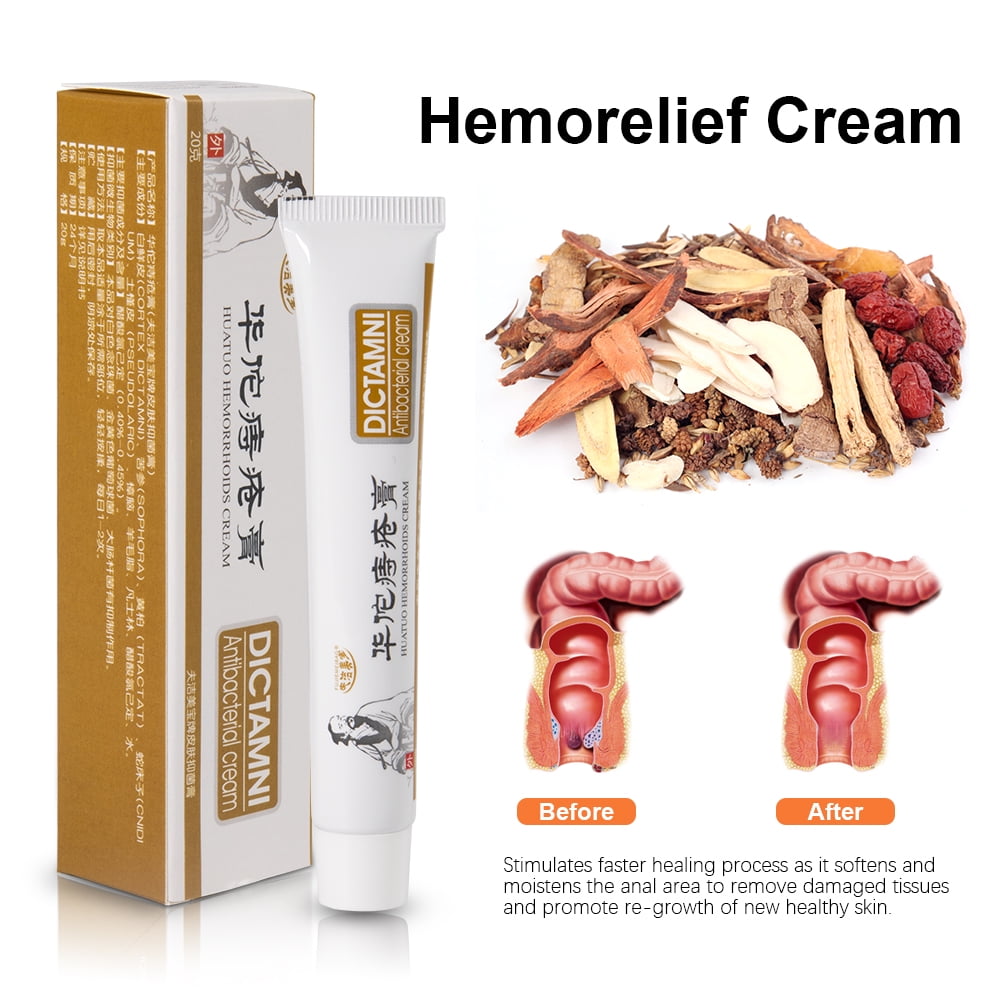
Nuts and Seeds: Small but Mighty
Nuts and seeds are not only rich in fiber but also provide healthy fats and proteins. A small handful (about 20) of almonds or pecans can offer around 3 grams of fiber. Incorporate them into your diet by:
- Adding them to salads for extra crunch
- Using them as toppings for yogurt or oatmeal
- Enjoying them as a quick, fiber-rich snack
Whole Grains: The Foundation of a Fiber-Rich Diet
Whole grains are excellent sources of both soluble and insoluble fiber. They offer a variety of options to suit different tastes and dietary needs:
Oats and Barley: Soluble Fiber Champions
Oats and barley are particularly rich in soluble fiber, which forms a gel-like substance in the digestive tract, softening stools and easing their passage. Try these ideas:
- Start your day with a bowl of oatmeal
- Use barley in soups and stews
- Bake with oat flour for added fiber in treats
Whole Wheat and Rye: Insoluble Fiber Boosters
Whole wheat and rye provide insoluble fiber, which adds bulk to the stool and helps move it through the digestive system. Incorporate these grains by:
- Choosing whole grain bread instead of white
- Opting for whole wheat pasta in your favorite recipes
- Trying rye crackers as a snack

Can swapping refined grains for whole grains really make a difference? Absolutely. For instance, choosing a packet of instant oatmeal over a plain white bagel for breakfast can double your fiber intake while halving the calories.
Fruits and Vegetables: Nature’s Fiber-Rich Treats
Fruits and vegetables are not only packed with essential vitamins and minerals but are also excellent sources of both soluble and insoluble fiber. They offer a wide variety of options to suit every palate:
Berries and Citrus Fruits: Flavonoid-Rich Fiber Sources
Berries and citrus fruits are not only high in fiber but also rich in flavonoids, compounds that can help control hemorrhoid bleeding. Some fiber-rich fruits include:
- Raspberries (8 grams of fiber per cup)
- Pears (5.5 grams of fiber per medium fruit)
- Oranges (3 grams of fiber per medium fruit)
Leafy Greens and Cruciferous Vegetables: Nutrient-Dense Fiber Options
Dark, leafy greens and cruciferous vegetables are powerhouses of nutrition, offering both fiber and a range of beneficial nutrients. Consider adding these to your diet:
- Broccoli (5 grams of fiber per cup)
- Brussels sprouts (4 grams of fiber per cup)
- Spinach (4 grams of fiber per cup)

How can you easily increase your fruit and vegetable intake? Try adding an extra serving to each meal. For example, toss berries into your morning cereal, add apple slices to your lunchtime salad, or include a side of steamed broccoli with your dinner.
Hydration: The Unsung Hero in Hemorrhoid Management
While focusing on fiber-rich foods is crucial, the importance of proper hydration in managing hemorrhoids cannot be overstated. Adequate fluid intake works hand in hand with dietary fiber to promote healthy bowel movements and prevent constipation.
Water: The Essential Fluid
Water is the best choice for staying hydrated. It helps soften stools and makes them easier to pass, reducing strain during bowel movements. Aim for at least 8-10 large glasses (about half a gallon) of water daily. This is especially important when increasing your fiber intake, as fiber absorbs water.
Hydrating Foods: Eating Your Water
Some fruits and vegetables have high water content, contributing to your daily fluid intake while providing fiber and nutrients. Consider incorporating these hydrating foods:
- Cucumber (96% water)
- Watermelon (92% water)
- Celery (95% water)
- Tomatoes (94% water)

How can you ensure you’re drinking enough water? Try carrying a reusable water bottle with you throughout the day, or set reminders on your phone to prompt regular water breaks.
Foods to Avoid: Potential Hemorrhoid Triggers
While incorporating fiber-rich foods is crucial, it’s equally important to be aware of foods that may exacerbate hemorrhoid symptoms. Certain dietary choices can lead to constipation or irritation, potentially worsening your condition.
Low-Fiber Foods: The Constipation Culprits
Foods low in fiber can contribute to constipation, a common trigger for hemorrhoids. It’s best to limit your intake of:
- White bread and bagels
- Processed foods, including frozen meals and fast food
- Dairy products like milk and cheese
- Red meat
High-Sodium Foods: The Hidden Danger
Excessive salt intake can lead to fluid retention, potentially increasing pressure on the veins in your rectal area. Be mindful of your consumption of:
- Canned soups and vegetables
- Processed meats like bacon and ham
- Salty snacks such as chips and pretzels
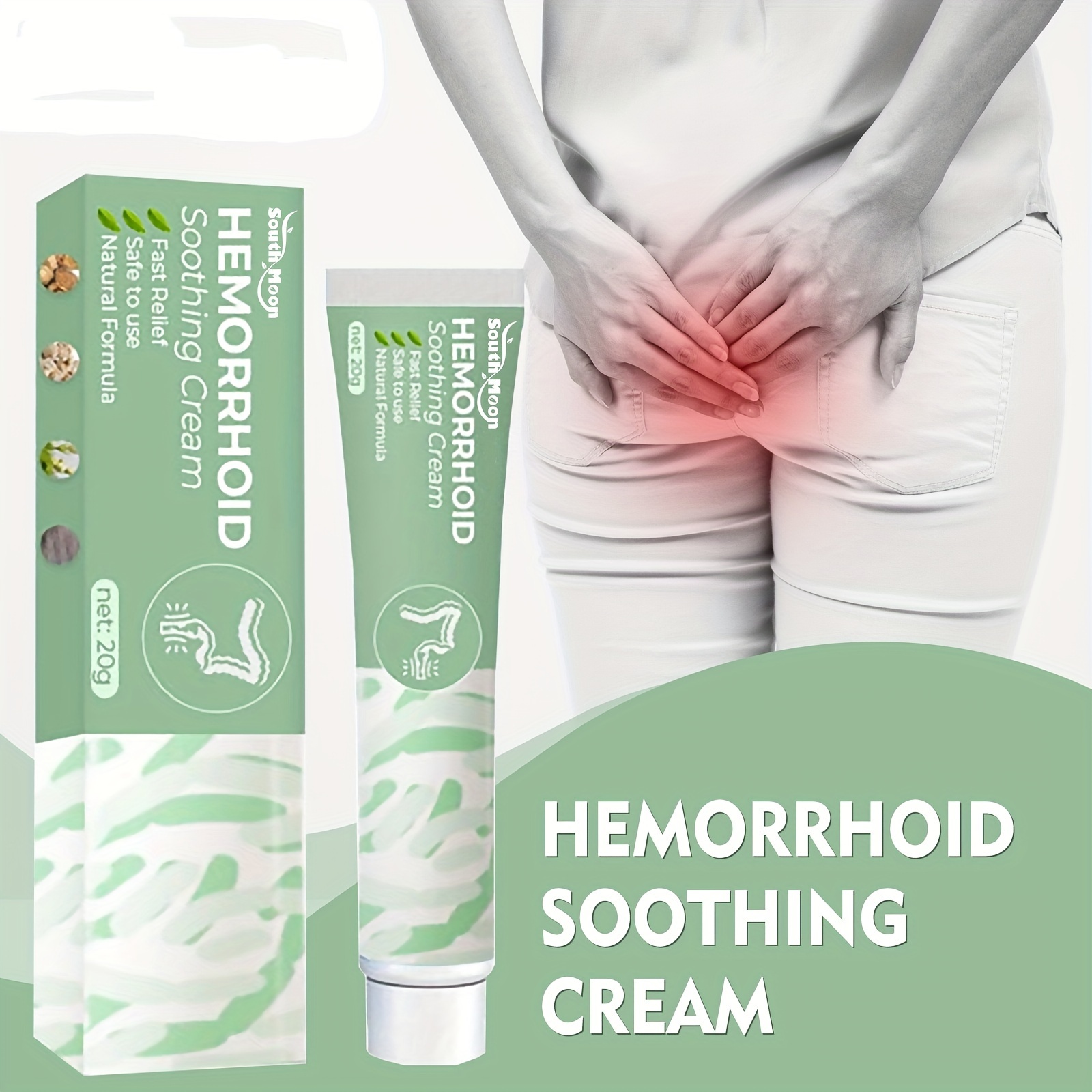
Is it necessary to completely eliminate these foods? Not necessarily. The key is moderation and balance. Focus on gradually replacing low-fiber, high-sodium options with healthier alternatives to support your digestive health.
Practical Tips for a Hemorrhoid-Friendly Diet
Transitioning to a hemorrhoid-friendly diet doesn’t have to be overwhelming. Here are some practical tips to help you make positive dietary changes:
Gradual Fiber Increase
To avoid digestive discomfort, increase your fiber intake gradually. Start by adding one extra serving of high-fiber food per day and slowly build up over several weeks. This approach allows your digestive system to adjust to the increased fiber content.
Meal Planning and Preparation
Plan your meals in advance to ensure a good balance of fiber-rich foods. Some strategies include:
- Preparing a large batch of fiber-rich soup or stew for easy meals throughout the week
- Keeping cut vegetables and fruits readily available for quick snacks
- Experimenting with new recipes that incorporate legumes and whole grains

Smart Substitutions
Make simple swaps to boost your fiber intake:
- Choose whole grain bread instead of white
- Opt for brown rice over white rice
- Replace meat with beans in some of your favorite recipes
How can you make these changes sustainable? Focus on finding fiber-rich foods you genuinely enjoy. This way, your new dietary habits will be more likely to stick in the long term.
By mindfully incorporating these dietary strategies and being aware of potential trigger foods, you can significantly impact your hemorrhoid management. Remember, while diet plays a crucial role, it’s always advisable to consult with a healthcare professional for personalized advice, especially if you’re experiencing persistent or severe symptoms.
Best and Worst Foods for Hemorrhoids
“Eat more fiber.” “Stay hydrated.”
That’s the advice everyone gets about hemorrhoids — and it’s good. But what does it mean in real life, when you’re at the grocery store or deciding what to put on your plate?
Let’s take a look at specific foods that can help this painful problem and ways to work them into your meals. And on the flip side, what you may want to stay away from.
2 Kinds of Fiber
Soluble fiber dissolves in water to form a gel-like goo. (Picture what happens to oats when you mix them with water.) You want this stuff. It makes your stool soft, well-formed, and easy to pass. No constipation, little irritation. Sounds like the Holy Grail of poop, right?
Insoluble fiber is what your grandmother would call “roughage.” It doesn’t dissolve. (If you drop a chunk of celery in water, it just sits there.) It helps to keep things moving through — and out of — your system and to balance the chemistry in your intestines.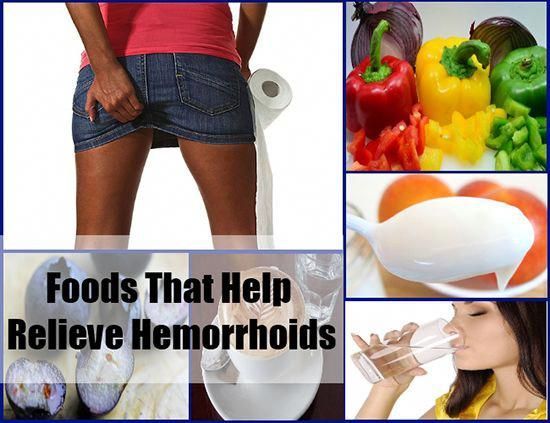
Many “high-fiber” foods have both kinds.
You should aim for 25-30 grams or more of fiber every day from what you eat, about twice what most Americans get. In general, you’ll want about a third of that to be soluble (more when you have diarrhea).
Too much fiber too fast can cause gas and bloating, so add a little bit to your diet at a time if you’re not used to it. You’ll also need to drink more fluids to help your body use that fiber: 8-10 large glasses (at least a half-gallon) of water every day.
Beans, Lentils, and Nuts
You’ll get a lot of bang for your bite with the legume family. Just 1/2 cup of beans — such as kidney, navy, lima, or black beans — will cover about a third of your daily goal. It will have between 7 and 10 grams of fiber (both soluble and insoluble), depending on which variety you choose.
About 20 almonds or pecans have around 3 grams of fiber. A 1/2 cup of edamame does, too, and it only has about half the calories.
Instead of using just meat in chili and soups, add or substitute beans. You can also use beans and nuts in salads. Try Indian and Middle Eastern recipes, which often call for beans, lentils, and peas.
You can also use beans and nuts in salads. Try Indian and Middle Eastern recipes, which often call for beans, lentils, and peas.
Grains
Swap white breads, pastas, and crackers for versions made with whole-grain flours, buckwheat, stone-ground cornmeal, or rye to boost the amount of insoluble fiber you’ll get. Cooked oats and barley will give you soluble fiber, too.
Instead of a plain white bagel for breakfast, have a packet of instant oatmeal — with twice the fiber for less than half the calories. Reach for no-butter popcorn when you get the munchies. Sprinkle oat bran or wheat germ on salads and soups.
Fruits and Vegetables
You can’t go wrong with plant foods. Keep the skins on when they’re thin, like on apples, pears, plums, and potatoes. That’s where the insoluble fiber is, as well as compounds called flavonoids that can help control hemorrhoid bleeding.
Brightly colored produce — berries, grapes, tomatoes, and kale and other dark, leafy greens — are generally rich in flavonoids.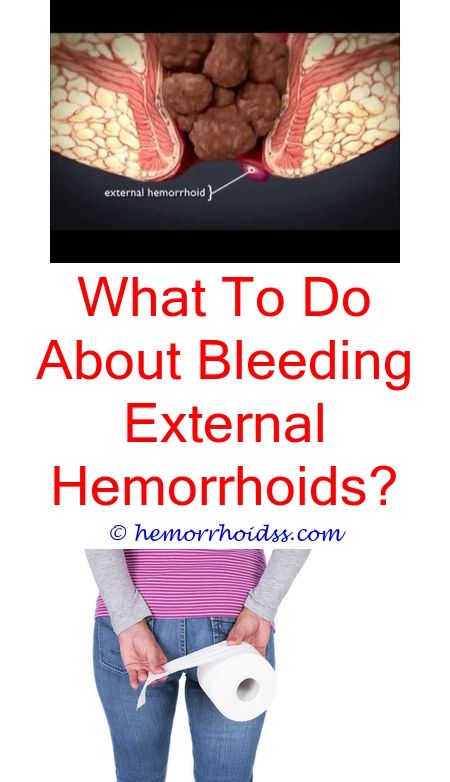 And the fresher, the better. Try to keep them whole and not damage the skins or leaves until you’re ready to eat them. Avoid cooking to the point that their color fades.
And the fresher, the better. Try to keep them whole and not damage the skins or leaves until you’re ready to eat them. Avoid cooking to the point that their color fades.
A serving of fruit is often good for at least 10% of your daily fiber, usually 3 to 4 grams. A cup of leafy greens, broccoli, Brussels sprouts, winter squash, or green peas will get you 4 to 5 grams of fiber.
Some veggies and fruits have fiber plus a lot of water. Cucumbers, celery, mild bell peppers, and watermelon are mostly water — more than 90%.
Make a habit of adding another fruit or vegetable to any meal, like berries or bananas in your cereal, apple chunks on your salad, spinach in your omelet, or grated zucchini in your spaghetti sauce.
Snack on dried fruits like figs, apricots, and dates. Swap sugary baked desserts for fresh fruit — raw strawberries rather than strawberry pie.
What Not to Eat
Foods with little fiber can cause or make constipation (and therefore hemorrhoids) worse, so it’s best to limit how much you eat of them.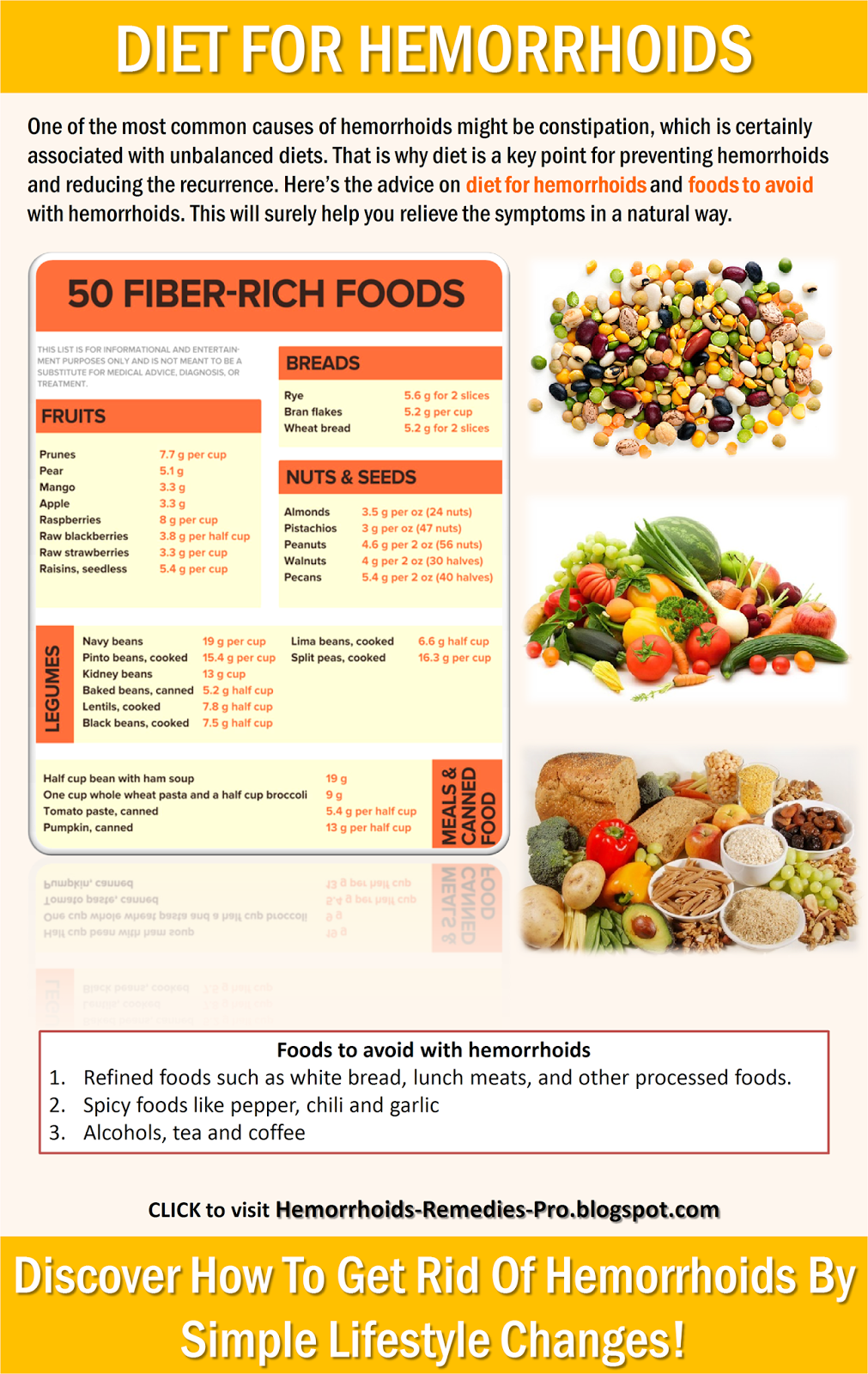
- White bread and bagels
- Milk, cheese, and other dairy
- Meat
- Processed foods such as frozen meals and fast food
Watch the amount of salt you eat. It can lead to your body hanging on to water, which puts more pressure on your blood vessels. That includes the veins in your bottom that cause hemorrhoids.
Iron supplements can cause constipation and other digestive problems, so talk to your doctor before you take them.
Best and Worst Foods for Hemorrhoids: Betsy F. Clemens, M.D.: Board Certified Physician
Hemorrhoids are a common occurrence that’s often related to the characteristics of your stool and how easy it is for your bowels to pass said stools. So, what’s food got to do with it? The foods you eat and the liquids you consume help determine the nature of your stools.
Dr. Betsy Clemens and her team at Midwest Hemorrhoid Treatment Center are experts at treating hemorrhoids with effective, nonsurgical solutions, such as infrared coagulation (IRC).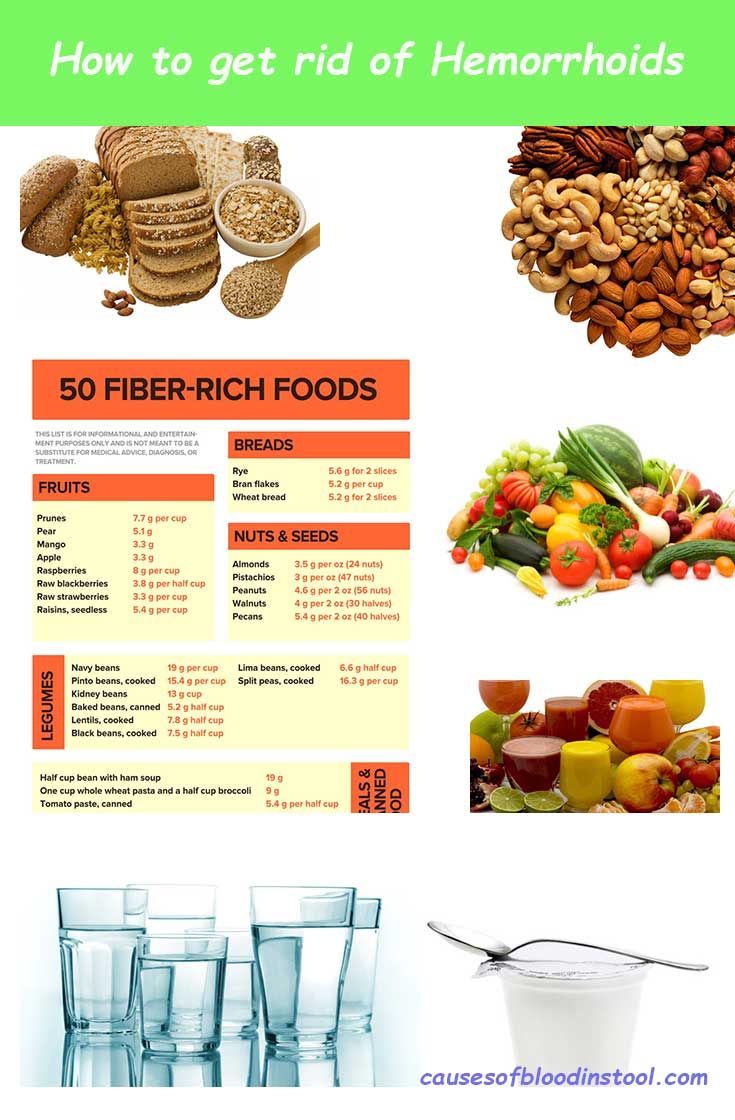 Dr. Clemens is also focused on helping prevent hemorrhoids and the discomfort they cause. One way of doing that is to make a few changes to your diet.
Dr. Clemens is also focused on helping prevent hemorrhoids and the discomfort they cause. One way of doing that is to make a few changes to your diet.
You are what you eat
It’s an often-repeated adage and research-proven fact that the foods and beverages you consume regularly can greatly impact your health. It’s certainly true that what you eat and drink directly influences the types of stools you produce — and hemorrhoids are often linked to the nature of your stools.
Infrequent or difficult-to-pass stools, for instance, may result in the bulging anal or rectal veins associated with hemorrhoids as you’re forced to strain excessively during a bowel movement. Frequent bouts of diarrhea also irritate and inflame rectal veins and can evolve into hemorrhoids. If you already have hemorrhoids, faulty stools can worsen the discomfort or bleeding you’re experiencing.
One of the key components of managing or preventing diet-related hemorrhoids is to follow a balanced nutrition plan — one that includes enough fiber to keep your stools soft but formed and occurring on a regular basis. For most people, this adds up to 25-30 grams of fiber daily.
For most people, this adds up to 25-30 grams of fiber daily.
Solving the fiber puzzle
More fiber and lots of water is a quick answer to what you should include on the menu if you’re worried about hemorrhoids. Fiber comes in two types, however, and it’s the soluble fiber that keeps your stools soft but well-formed and easy to pass.
Found in foods like oats, soluble fiber dissolves into a gel-like substance when mixed with the water that’s added during the digestive process. The second type of fiber is insoluble, sometimes called roughage. It adds bulk to your stool and keeps things moving through your system, but it does not dissolve.
Generally, Dr. Clemens recommends that about one-third of your daily fiber intake consist of soluble fiber. Many fiber-rich foods contain both types of fiber. And you’ll need 8-10 large glasses of water per day to keep all this fiber moving through your system.
Foods to embrace
Beans, lentils, and nuts are fiber-rich foods that can add a boost of flavor to salads, chilis, and rice. Depending on the type you choose, a half cup of beans can contain 7-10 grams of fiber, both soluble and insoluble. It takes just 20 almonds to add 3 grams of fiber to your salad. A half cup of edamame adds the same fiber grams as the almonds but about half the calories.
Depending on the type you choose, a half cup of beans can contain 7-10 grams of fiber, both soluble and insoluble. It takes just 20 almonds to add 3 grams of fiber to your salad. A half cup of edamame adds the same fiber grams as the almonds but about half the calories.
Other high-fiber foods to choose include:
- Whole-grain bread
- Wheat germ or oat bran
- Instant or regular oatmeal
- Salads that include dark leafy green vegetables, such as kale or spinach
- Green peas
- Zucchini
- Summer squash
Most fruits and some foods, such as potatoes, hold some of their fiber and many other nutrients in the skin. Choose thin-skinned fruits such as apples, pears, and plums to help ensure you get the fiber and flavor you desire.
Foods to avoid
Low-fiber foods that can cause or worsen constipation and lead to hemorrhoids include:
- Milk, cheese, ice cream, and other dairy foods
- Meat
- Processed foods such as sandwich meat, pizza, frozen meals, and other fast foods
For more information about what you can do to manage your hemorrhoid symptoms, schedule a visit with Dr.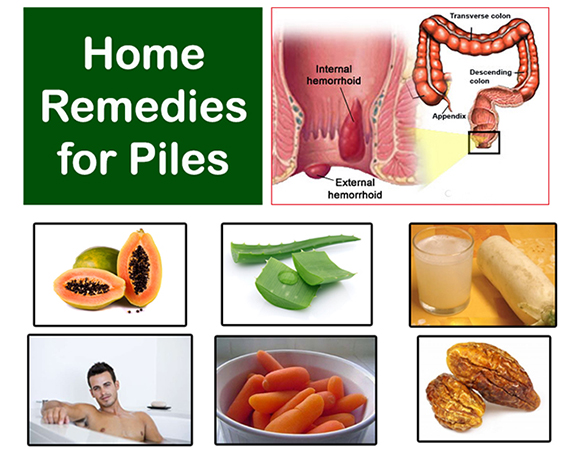 Clemens today. Call our office in Creve Coeur, Missouri, or book your appointment online.
Clemens today. Call our office in Creve Coeur, Missouri, or book your appointment online.
Diet for Hemorrhoidal Sufferers: Tips for Preventing Hemorrhoids
1 in 20 people suffer from hemorrhoids, also referred to as piles. Symptoms range from mild irritation to extreme pain that disrupts your lifestyle.
Yet, certain techniques can prevent or provide relief for those affected by hemorrhoids. Your diet and lifestyle choices play a big role in managing this condition. Certain foods can help to reduce symptoms while others can cause a flare-up.
Read on to learn more about finding the best diet for those that suffer from hemorrhoids.
The Main Causes of Hemorrhoids
Hemorrhoids result from inflamed veins in the anus and rectum. This can cause sensitivity, itching, hemorrhoid pain, and bleeding. They also make bowel movements more painful and difficult and may produce mucus discharge.
Certain activities or situations can cause a flare-up to occur. This includes bathroom habits like straining while trying to pass a stool. Doing this may cause rectal veins to swell.
This includes bathroom habits like straining while trying to pass a stool. Doing this may cause rectal veins to swell.
Waiting too long to go to the bathroom can harden your stools and make them more uncomfortable. Be sure to use a comfortable sitting position when going to the bathroom. Don’t stay on the toilet for long periods as this creates extra pressure.
Heavy lifting or an inactive lifestyle may also contribute to hemorrhoids. Sitting for long periods of time puts a strain on your rectal veins. Weight gain is another cause of this condition.
Some people develop hemorrhoids after an illness that causes repetitive constipation or diarrhea. You can even get hemorrhoids from coughing too much or too intensely.
Hemorrhoids often occur in pregnancy for many women as well. This is caused by an increase in weight and pressure on the organs.
An unhealthy diet leads to constipation and other digestive problems. Hemorrhoids can develop from this and symptoms can worsen.
The Best Diet for Hemorrhoidal Sufferers
The right diet can help prevent hemorrhoids and find relief from their symptoms. Here are 5 helpful tips to follow a proper diet for hemorrhoids sufferers.
1. Stay Hydrated All Day Long
One important tip is to drink plenty of water. This keeps you well hydrated and helps with bowel movements. Aim for at least 8 glasses of water a day.
Constipation can come from dehydration, which only complicates hemorrhoids further. Drinking plenty of water also helps you digest fiber to avoid constipation.
It helps to consume foods with high water content as well. Watermelon, celery, and cucumbers are all great choices.
2. Fill up on Plenty of Fiber
A hemorrhoids high fiber diet helps to regulate your bowel movements. It increases the amount of water in your stools and also makes your stools more normal and easier to pass. Fiber can reduce symptoms of hemorrhoids and make it less likely that bleeding will occur.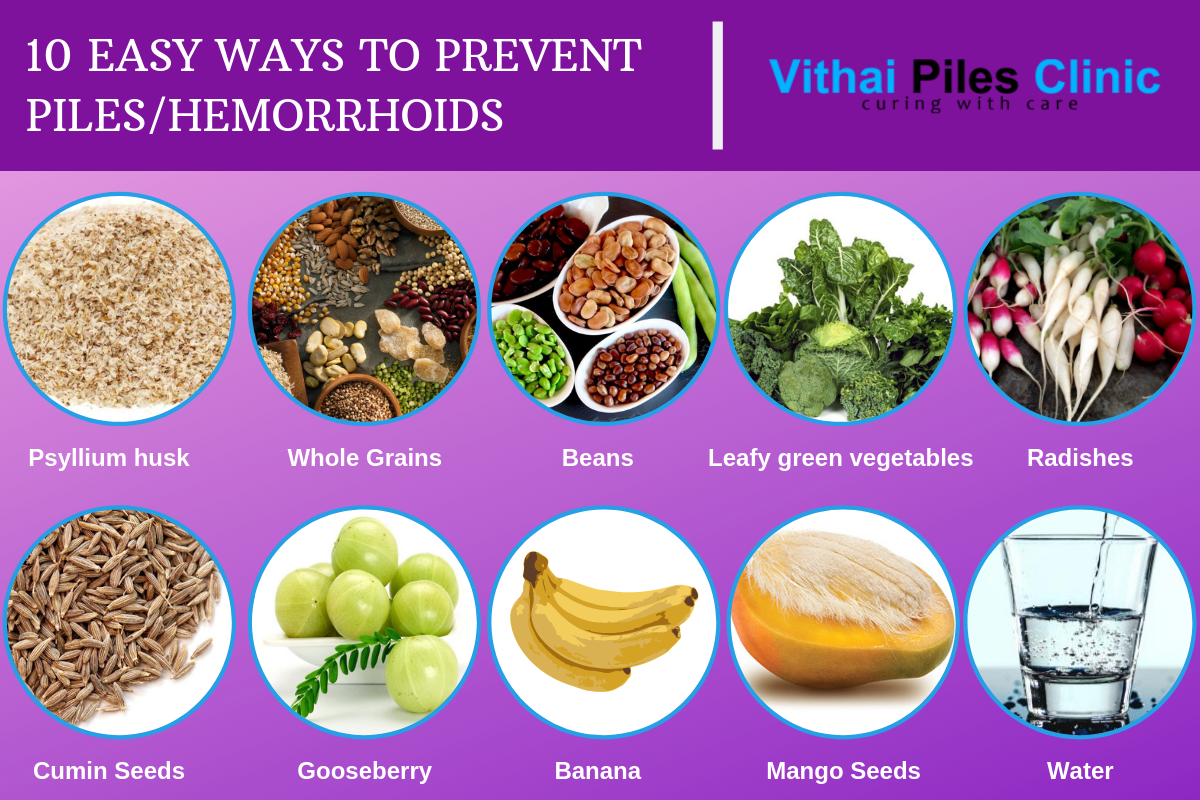
Fiber is also important for keeping you feeling fuller for longer. This means you’re less likely to snack on unhealthy foods that can cause digestive issues.
Along with protein, it’s a key nutrient for those who follow a regular workout routine. Physical activity is another helpful way to avoid hemorrhoids.
Be sure to include both soluble and insoluble fiber in your diet. Soluble fiber makes it easier to dissolve food in water. Insoluble fiber helps bowels to move along through the intestines.
Some of the best food for hemorrhoids includes fruits, vegetables, whole grains, legumes, and nuts. Broccoli, apples, black beans, pears, peas, lentils, and bananas are high in fiber. Brussel sprouts, raspberries, brown rice, oatmeal, barley, and prunes are other good choices.
Fruit skins are a great source of insoluble fiber so be sure to leave them on. Taking a fiber supplement can also be helpful for hemorrhoids.
3. Focus on Foods High in Flavonoids
Flavonoids are plant-based chemicals that offer anti-inflammatory and antioxidant effects.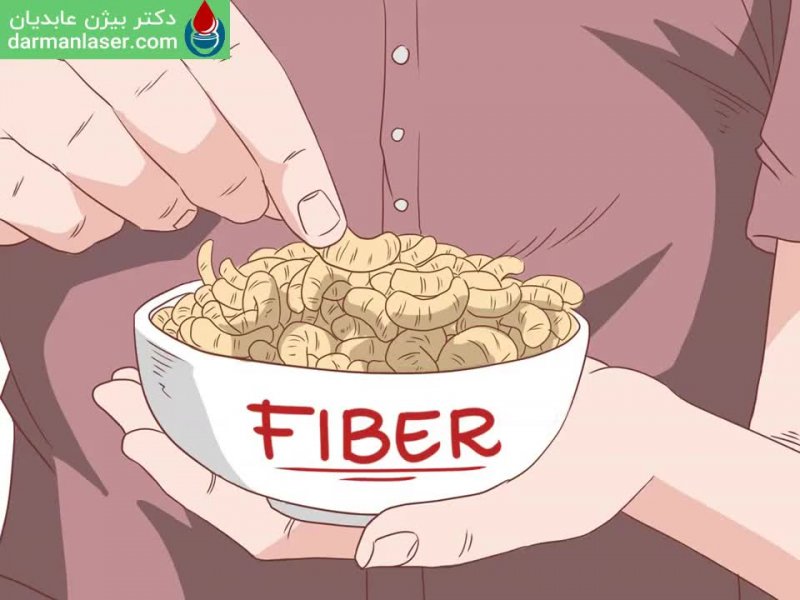 These phytonutrients repair tissue damage and support the lymphatic drainage system.
These phytonutrients repair tissue damage and support the lymphatic drainage system.
They also help with weight management and can lower your risk of obesity. Carrying around extra weight has a connection with developing hemorrhoids.
Research shows that flavonoids can be effective in treating hemorrhoids. You can find flavonoids in tea, red wine, and citrus juice. Spinach, kale, and onions also have a high content of these nutrients.
4. Limit Foods That Can Cause Constipation
Foods that cause hemorrhoids are often low in fiber. This leads to constipation which worsens the condition.
Avoid processed foods and refined carbs, like white bread and pasta. Having a gluten or wheat sensitivity should also call for a special diet like this.
Dairy products, like cheese, yogurt, and milk can also increase constipation. Avoiding red or processed meat can be helpful as well.
5. Maintain a Healthy Gut
Your gut health has a lot to do with how your digestive system functions.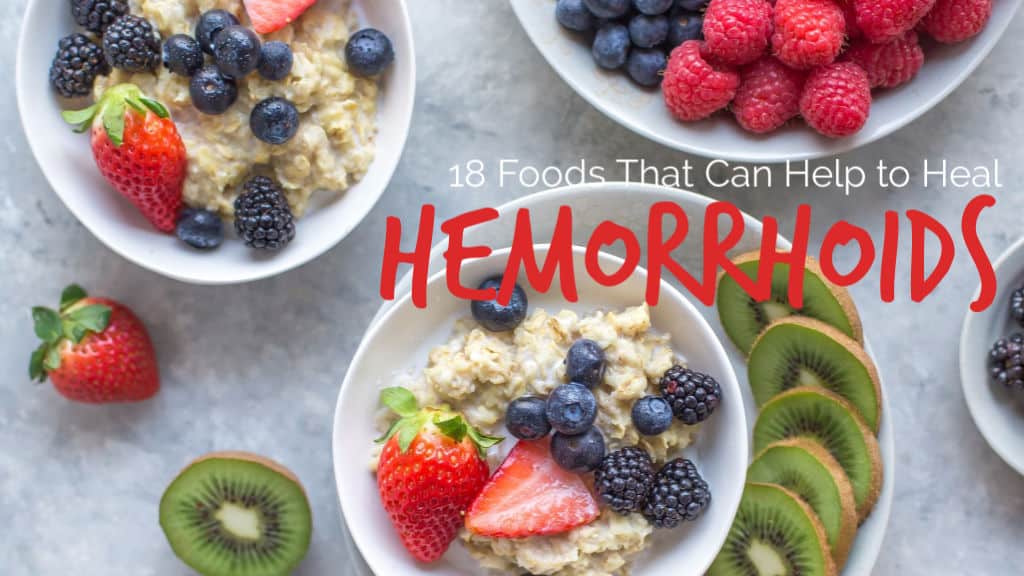 Good and bad bacteria live inside your gut and it’s important to maintain a balance between the two.
Good and bad bacteria live inside your gut and it’s important to maintain a balance between the two.
Probiotics can help enhance your gut health and promote healthy bacteria. You’ll find these in foods like kombucha, kimchi, and miso. A plant-based diet is also good for detoxifying your body.
Foods to avoid with hemorrhoids include fried food or those high in saturated fat. Spicy food can also upset your stomach and cause irritation when going to the bathroom. Avoiding spicy foods will also help reduce acid reflux.
Caffeine and alcohol are other culprits that can disrupt your gut function. Too much sodium can dehydrate you and increase bloating.
Finding Permanent Relief from Hemorrhoids
The right diet plan is a key tactic in preventing and finding relief from hemorrhoids. A diet for hemorrhoidal sufferers should be full of fiber and healthy foods.
Other tips for relief include sitz baths, witch hazel pads, and anti-inflammatory creams.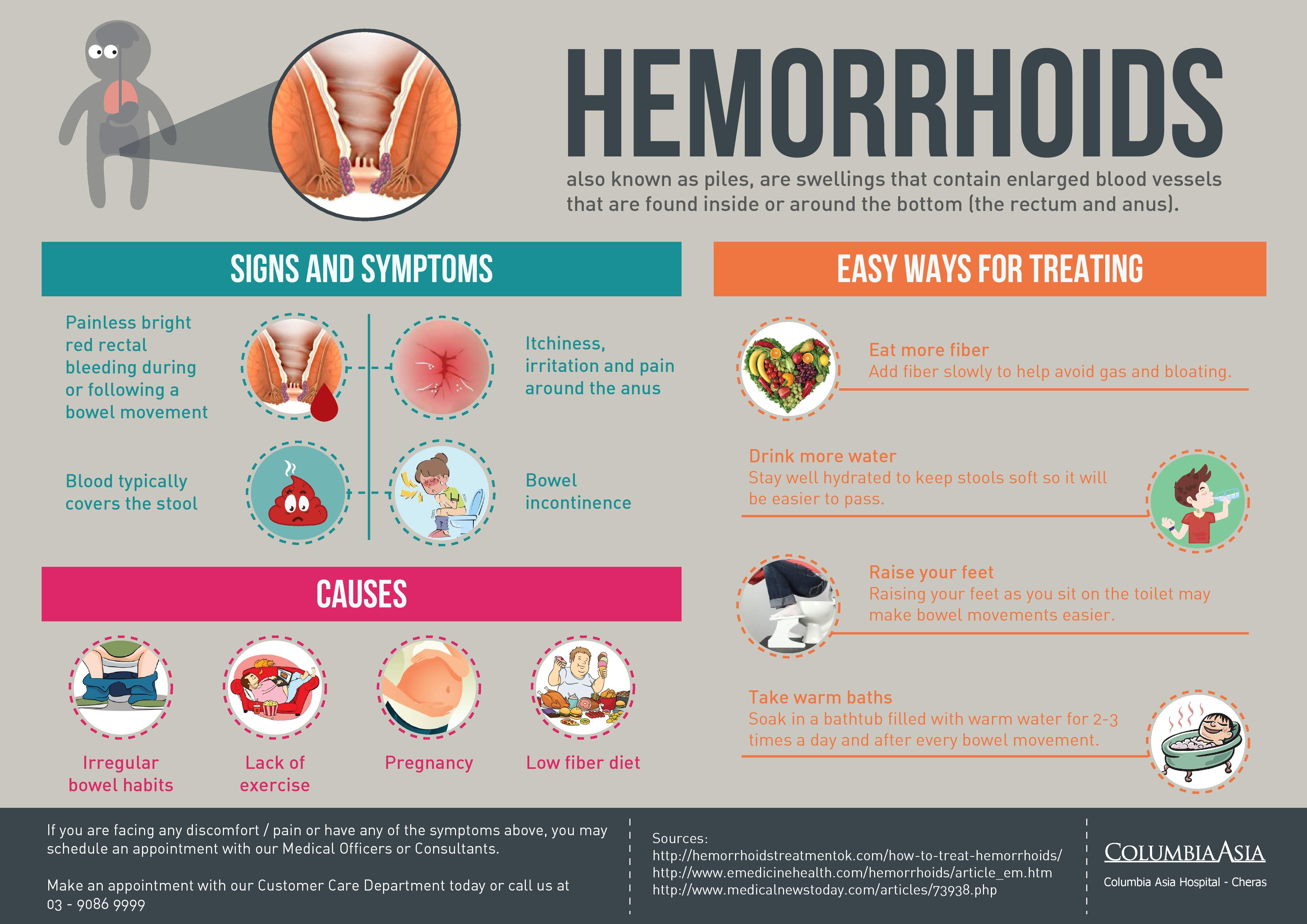 There are also a few non-surgical treatments, such as the CRH banding technique, to help get rid of hemorrhoids. Learn more about Dr. Starpoli’s effective treatment options for hemorrhoids.
There are also a few non-surgical treatments, such as the CRH banding technique, to help get rid of hemorrhoids. Learn more about Dr. Starpoli’s effective treatment options for hemorrhoids.
6 Foods to Prevent Hemorrhoid Pain: Elvira Klause, MD, FACS: General Surgeon
Hemorrhoids are common, with up to 40% of Americans suffering from these swollen blood vessels. But it’s also an embarrassing condition that people are reluctant to discuss. That’s because hemorrhoids are located in and around the rectum and anus, often cause itching, irritation, and pain with bowel movements.
Hemorrhoid pain is made worse by irregular, firm stools and the straining required to pass them. For relief from painful hemorrhoids without the need for medical intervention, strive to get 28 grams of fiber every day (for a 2,000-calorie diet).
Fiber is a nutrient that’s essential for digestive health. It’s an element of many plant-based foods that the human body can’t break down, so it keeps your digestive tract clean and bowel movements soft.
When hemorrhoid discomfort starts affecting your quality of life, Elvira Klause, MD can help. She offers a range of nonsurgical hemorrhoid procedures, from sclerotherapy to rubber band ligation. These treatments cut blood supply to the enlarged vessels, allowing them to disappear.
But before you turn to laxatives or an in-office hemorrhoid treatment, try adjusting your diet to reduce constipation and prevent hemorrhoid pain. Get more fiber by adding these foods to your diet.
Legumes
Legumes include beans, peas, chickpeas, and lentils, to name a few. Legumes are high in soluble and insoluble fiber, which are both important for a healthy digestive tract. They help give stools bulk to reduce straining and decrease your risk of developing hemorrhoids.
Just one cup of lentils contains about half the daily recommended amount of fiber. Adding legumes to your diet is a quick and easy way to get more fiber and minimize hemorrhoid pain.
Whole grains
Whole grain foods contain all parts of the grain, including the high-fiber germ, bran, and endosperm. While white flour and the foods made with it have less fiber, choosing whole-grain options gives you more fiber without sacrificing taste.
Oats, barley, quinoa, brown rice, corn, and whole-wheat flour all have gut-healthy benefits. When you’re shopping, look for breads, cereals, and other foods made with whole grains.
Cruciferous vegetables
Cruciferous vegetables are broccoli, cauliflower, arugula, kale, radishes, cabbage, and more. They’re high in fiber, and they encourage regularity and high-quality stools. Toss some of these healthy options into your next salad to fight hemorrhoid pain.
Plus, these cruciferous veggies offer more than just fiber. They contain other chemicals that your digestive system breaks down, which diversifies and strengthens the healthy bacteria in your gut.
Pears
Pears are some of the best fruits to choose if you need to eat a diet with more fiber.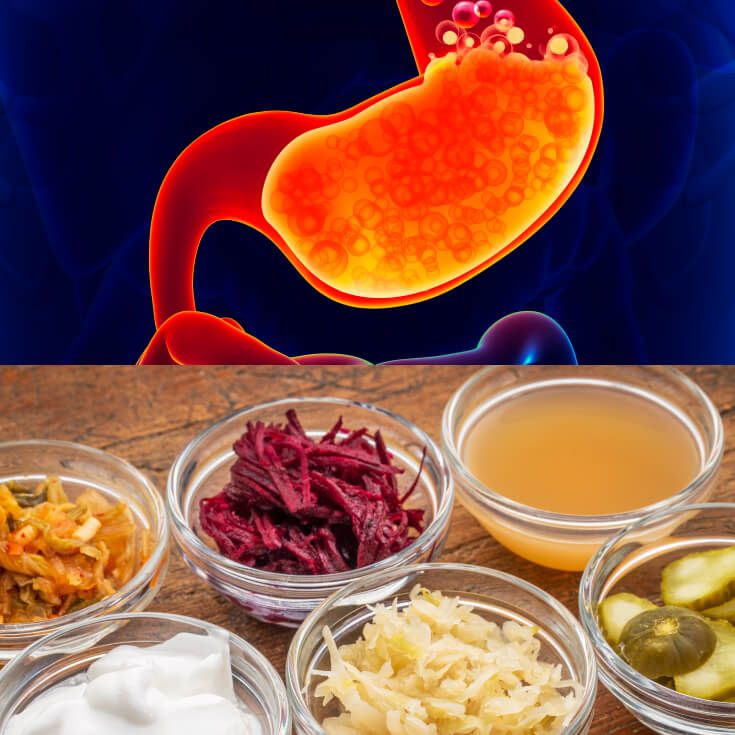 One pear has about 6 grams of fiber. When you eat pears, be sure to eat the peel because that’s where most of the fiber is.
One pear has about 6 grams of fiber. When you eat pears, be sure to eat the peel because that’s where most of the fiber is.
Another fiber-packed fruit that makes an easy snack is the apple. Apples have about 5 grams of fiber each.
Berries
Pears and apples aren’t the only fruits with fiber. Berries of all kinds — including blackberries, raspberries, strawberries, and blueberries — are all high in fiber.
Snack on berries to add more fiber to your diet. While all berries are a good choice, raspberries tend to have the most fiber, with about 8 grams in a cup.
Water
Although water isn’t a food per se, it’s a crucial element of a gut-healthy diet. Staying hydrated boosts fiber’s effects in your digestive tract and makes stools softer and easier to pass. Make water your beverage of choice to prevent hemorrhoid pain.
The amount of water you should drink each day varies depending on a number of factors like your age and activity level. Talk to Dr. Klause to determine how much water is enough to keep you hydrated.
Talk to Dr. Klause to determine how much water is enough to keep you hydrated.
If you’re fighting hemorrhoid pain, focus on adding the above foods to your diet. Strive to avoid certain foods and beverages that can make constipation and hemorrhoids worse, including:
- High-salt foods
- Fried foods
- Spicy foods
- Dairy products
- Red meat
- Caffeine
- Alcohol
Eat a healthy, nutritious diet to encourage regularity and prevent hemorrhoid discomfort. If you’re still bothered by uncomfortable hemorrhoids, Dr. Klause is here to help you find relief. Call our office or request an appointment online to learn more about your options.
6 Easy Ways to Prevent Hemorrhoids
1. Fill Up on Fiber
Hemorrhoids are more likely to occur in people who have infrequent bowel movements. One of the easiest, most natural ways to become more regular is by filling up on fiber either through your diet or supplements.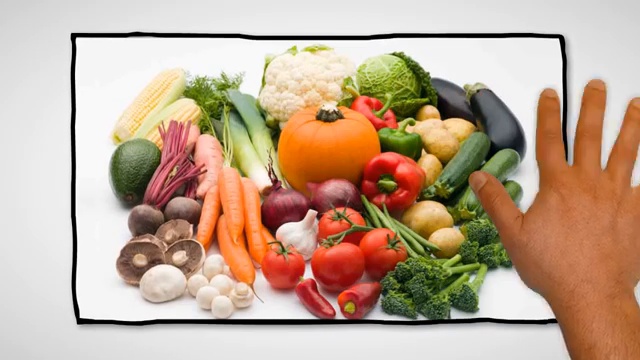 “Adding fiber to the diet is the universal recommendation of both family doctors and gastroenterologists,” says Dr. Kussin. “It may increase gas, but this is a small price to pay for the benefits.” Aim to get 25 to 30 grams of fiber per day. Great food sources of fiber include:
“Adding fiber to the diet is the universal recommendation of both family doctors and gastroenterologists,” says Dr. Kussin. “It may increase gas, but this is a small price to pay for the benefits.” Aim to get 25 to 30 grams of fiber per day. Great food sources of fiber include:
- Legumes, such as split peas, lentils, black beans, lima beans, and baked beans
- Whole grains, such as barley, bran flakes, oatmeal, and brown rice
- Vegetables, such as artichoke, green peas, broccoli, and Brussels sprouts
- Fruits, such as raspberries, pears, apples, and bananas
2. Drink Enough Water
This hemorrhoid prevention strategy is simple and cheap, yet so few of us actually do it. Along with eating a healthy diet full of fiber, adequate hydration from water is the key to having healthy bowel movements. “Drinking enough water helps prevent constipation and therefore decreases straining,” says Richard Desi, MD, a gastroenterologist at Mercy Medical Center in Baltimore. Drinking six to eight glasses of water each day doesn’t just keep your digestive system running smoothly, it benefits your entire body.
Drinking six to eight glasses of water each day doesn’t just keep your digestive system running smoothly, it benefits your entire body.
3. Get Plenty of Exercise
According to Dr. Desi, exercise and hemorrhoids have a love-hate relationship. “Exercise helps keep the colon more regular,” he says. “However, engaging in activities that increase abdominal pressure and/or straining (such as weightlifting) can lead to the formation of hemorrhoids.” Staying active reduces your time spent sitting and putting pressure on the veins in your lower rectum. If you have a history of problematic hemorrhoids, you might want to steer clear of lifting heavy weights or other strenuous activities and opt for more moderate exercise routines such as yoga, swimming, or walking to prevent hemorrhoids from flaring.
4. Be Careful When It Comes to Laxatives
When you’re constipated, some fiber supplements, particularly psyllium capsules, have a track record of helping get you more regular, which can prevent painful hemorrhoids. As far as laxatives go, they can help as long as you choose the correct ones. “The safest laxatives are those that work with your body rather than those that stimulate or simulate normal physiological activities,” Kussin says. “Some laxatives work by stimulating intestinal contraction to move the contents along. This might increase hemorrhoid pressures and cause symptoms.” To prevent hemorrhoids or to treat hemorrhoids that are active, Kussin suggests osmotic laxatives that simply increase the amount of water in the gut and reduce constipation.
As far as laxatives go, they can help as long as you choose the correct ones. “The safest laxatives are those that work with your body rather than those that stimulate or simulate normal physiological activities,” Kussin says. “Some laxatives work by stimulating intestinal contraction to move the contents along. This might increase hemorrhoid pressures and cause symptoms.” To prevent hemorrhoids or to treat hemorrhoids that are active, Kussin suggests osmotic laxatives that simply increase the amount of water in the gut and reduce constipation.
5. Don’t Fight the Urge
When you have to go, go. This is one of the simplest ways to prevent hemorrhoids. “Ignoring Mother Nature has its risks, and hemorrhoids are one of them,” Kussin says. “If you obey your body when it screams at you, the chance of problems is less. You listen to everyone else when they scream at you; why not listen to your own body, too? When you wait until you decide you have the time to move your bowels, success will be far more elusive and straining far more likely. ”
”
6. Avoid Straining
Straining and putting more pressure on the veins in your rectum is one of the most common causes of painful or bleeding hemmorhoids. In some cases, this can happen as a result of pushing too hard when trying to have a bowel movement. Other situations can cause straining too, such as lifting heavy objects, a chronic cough, or even pregnancy. If you have issues with hemorrhoids, Kussin advises being aware of the strain you’re putting on your bowels and avoiding it as much as you can.
Read more: Hemorrhoids: What to Know
Digestive Disease Consultants of Orange County: Gastroenterologists
Hemorrhoids are a common problem. By age 50, one out of every two adults are affected by the embarrassing condition. Though symptoms vary — itching, tenderness, or rectal bleeding — they can be unpleasant and, at times, alarming.
Hemorrhoids may resolve on their own with at-home care. But if your symptoms are bothersome or not improving, our team of gastroenterologists at Digestive Disease Consultants of Orange County can help.
We develop personalized treatment plans based on the type of hemorrhoids you have and your symptoms. However, no matter the type or severity, we always make diet suggestions to alleviate your discomfort and prevent future problems. We want to share with you some of the best and worst foods for hemorrhoids.
Add more fiber-rich foods
One of the best ways to avoid hemorrhoids is to add more fiber-rich foods to your diet. Fiber is a type of carbohydrate your body can’t digest. It adds bulk and moisture to your stool, making it easier to pass, improving bowel movements and preventing constipation.
Constipation and straining during a bowel movement adds stress and pressure to the anal tissue, leading to the development of hemorrohoids.
To add more fiber to your diet, include foods such as:
- Whole grains (barley, oats, whole-wheat bread)
- Fruits and vegetables
- Legumes (beans and peas)
- Nuts
- Seeds
You need to up your fluid intake when adding more fiber to your diet to help keep things running smoothly. Too much fiber and not enough water causes or worsens constipation. The Mayo Clinic recommends 12 to 16 cups of fluids a day.
Too much fiber and not enough water causes or worsens constipation. The Mayo Clinic recommends 12 to 16 cups of fluids a day.
Limit foods that exacerbate symptoms
In addition to adding high-fiber foods to improve bowel movements, you want to avoid foods that may worsen or cause constipation. Though your constipation trigger foods may differ, some of the most common include:
- Milk
- Cheese
- Processed foods (white bread, chips, crackers, cookes)
- Red meat
- Fried foods
You may also want to limit alcoholic beverages, which leads to dehydration and may result in constipation. Spicy foods don’t back up your bowels, but they can increase pain and discomfort associated with hemorrhoids.
Making changes to your diet may alleviate your hemorrhoids and the related symptoms, but if your hemorrhoids worsen or fail to improve, we can help.
For internal hemorrhoids, we use the FDA-approved CRH O’Regan System, which efficiently and comfortably removes hemorrhoids without surgery.
What you eat or don’t eat can affect how long you suffer with hemorrhoids. If diet fails to alleviate your symptoms, contact the office nearest you, which includes Irvine, Huntington Beach, Tustin, and Foothill Ranch, California, by phone or online today.
Foods That Help Heal Hemorrhoids
Beans, chickpeas and other legumes are chock-full of fiber and may help ease the pain and discomfort associated with hemorrhoids.
Image Credit: Westend61/Westend61/GettyImages
About one in 20 Americans will experience hemorrhoids at some point in their lives. This painful condition is often ignored and goes untreated for years. In fact, only one in three people gets treatment. The good news is that you can prevent hemorrhoids and relieve their symptoms by tweaking your diet; certain foods can ease the pain and discomfort associated with this problem and keep flareups at bay.
What Are Hemorrhoids?
Let’s be honest: No one really enjoys talking about hemorrhoids. Millions of people prefer to suffer in silence rather than seek medical care. After all, it’s not easy to describe your symptoms and undergo the physical examinations necessary for diagnosing this condition. Unfortunately, the longer you ignore it, the worse it gets.
Millions of people prefer to suffer in silence rather than seek medical care. After all, it’s not easy to describe your symptoms and undergo the physical examinations necessary for diagnosing this condition. Unfortunately, the longer you ignore it, the worse it gets.
Hemorrhoids are swollen veins around the anus or in the anal canal. Also known as piles, they can be internal or external and cause pain during bowel movements, burning, itching, overall discomfort and bleeding from the rectum. Some of these symptoms go away within days, while others can last for weeks or months.
Their exact cause is unknown. In general, hemorrhoids result from increased pressure due to prolonged sitting, straining during defecation, heavy lifting, pregnancy, chronic constipation or obesity. For example, when you’re pregnant, the uterus places extra pressure on the veins in your anus and rectum, promoting the formation of hemorrhoids. Constipation only makes things worse.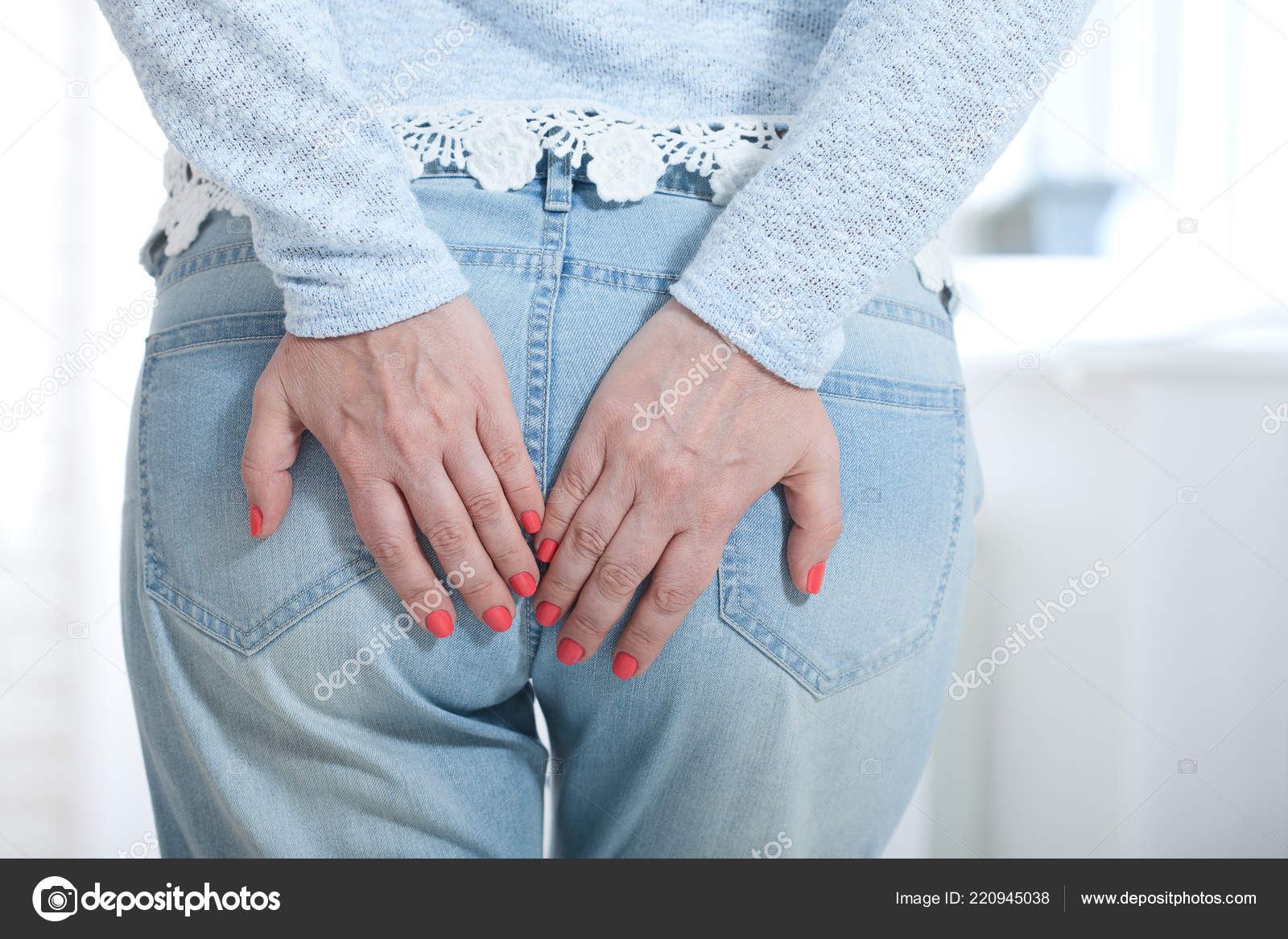
Can You Prevent Hemorrhoids?
Hemorrhoids tend to be more common in people aged 45 to 65 years. Approximately 35 percent of women develop this condition during pregnancy. Some individuals are genetically predisposed to it. However, there are a couple of steps you can take to prevent hemorrhoids and reduce their occurrence.
According to a 2015 review published in the World Journal of Gastroenterology, dietary and lifestyle modifications may help prevent and treat this condition. Fiber supplements, for example, can relieve your symptoms and cut the risk of bleeding by half. Health experts recommend eating more fiber, drinking plenty of water and limiting the time spent sitting on the toilet.
Research suggests that dietary changes, such as switching to a high-fiber diet for hemorrhoids, could be the best treatment and preventive measure. These modifications can help relieve constipation and reduce straining during bowel movements. Surgery is recommended only in severe cases. Beware that hemorrhoids may lead to perianal thrombosis, heavy bleeding and other complications if left untreated.
Surgery is recommended only in severe cases. Beware that hemorrhoids may lead to perianal thrombosis, heavy bleeding and other complications if left untreated.
Read more: 19 High-Fiber Foods — Some May Surprise You!
Include Psyllium in Your Diet
Psyllium husk is one of the best dietary sources of soluble fiber. A single tablespoon provides 6.9 grams of fiber, which represents about 28 percent of the daily recommended intake. After ingestion, psyllium absorbs water in the intestine and keeps your digestive system running smoothly.
Read more: Psyllium Husk Dosage
According to a 2019 article published in the International Journal of Molecular Sciences, this soluble fiber may cause positive changes in the gut flora and increase stool water content. Furthermore, it could help people with advanced hemorrhoids avoid surgery — especially when used along with other lifestyle modifications, such as spending less time on the toilet.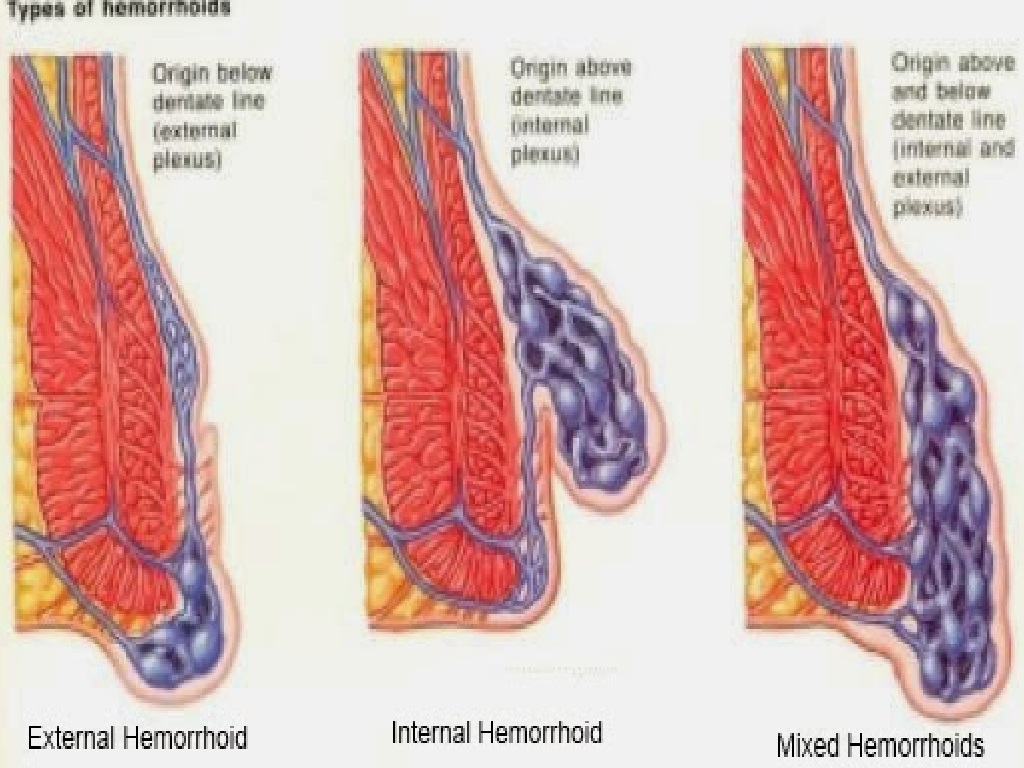
Depending on your preferences, you can take psyllium husk supplements or purchase this product in powder form. Sprinkle it over salads, mix it into smoothies and fruit juices, or take it with water. You can even add it to homemade bread, pancakes, waffles and other baked goods. This dietary fiber not only keeps you regular but also increases satiety and improves glycemic control.
Eat Plenty of Whole Grains
Rich in fiber, whole grains may help prevent and relieve constipation, which is a major contributing factor to hemorrhoids. A 2015 clinical trial published in the Journal of Cancer Prevention found that constipated subjects who consumed whole grain powder and vegetables daily for four weeks had more frequent bowel movements compared to the control group. Their symptoms, which included straining to defecate, incomplete evacuation and hard stools, improved in as little as two weeks.
Read more: 13 Powerful Grains and Seeds
Dietary fiber promotes digestive health by feeding the bacteria in your gut and acting as a bulking agent. It’s safer than laxatives and occurs naturally in plant-based foods. Whole grains contain both soluble and insoluble fiber, making them ideal for those struggling with constipation, sluggish digestion and hemorrhoids.
It’s safer than laxatives and occurs naturally in plant-based foods. Whole grains contain both soluble and insoluble fiber, making them ideal for those struggling with constipation, sluggish digestion and hemorrhoids.
One cup of oat bran, for example, delivers 14.4 grams of fiber and has only 231 calories. Wheat bran boasts 125 calories and 24.8 grams of fiber per cup. Your breakfast could also include rye, which has 571 calories and 25.5 grams of fiber per cup.
Fill Up on Beans
Beans and other legumes are an excellent source of fiber. One cup of mung beans provides a whopping 33.7 grams of fiber. That’s more than the recommended daily intake of fiber, which is 25 to 30 grams a day.
Kidney beans are a good choice too. With 45.8 grams of fiber per cup, they fill you up quickly and stimulate the bowels. You can always opt for black beans, which are loaded with fiber and antioxidants. These delicious, healthy foods not only aid in digestion but also improve insulin response and support metabolic health.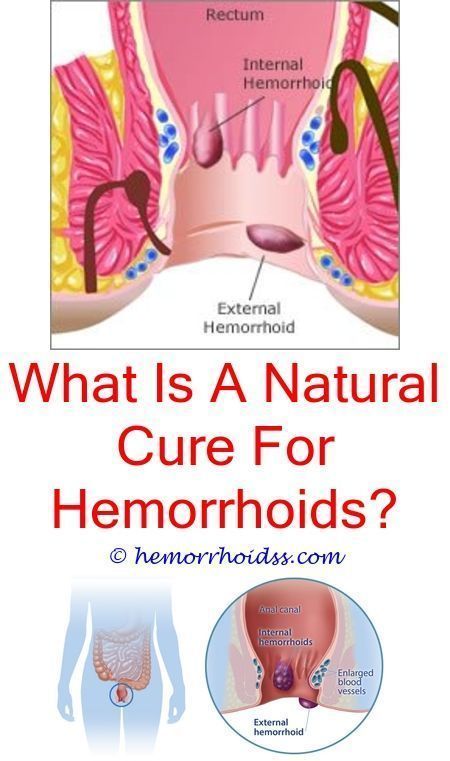
Add Pickles to Your Meals
When was the last time you ate pickled cucumbers, sauerkraut or other fermented foods? If you can’t remember, it’s time to do it more often. Sour pickles are high in fiber and probiotics, leading to better digestion and constipation relief. In the long run, they may help prevent hemorrhoids and keep you regular.
Pickled cabbage, for example, is naturally rich in lactic acid bacteria that help restore the gut microbiota and support digestive health. These bacteria species have been shown to relieve bloating, dyspepsia and constipation, among other gastrointestinal symptoms. Furthermore, they may improve immune function and enhance your body’s ability to fight diseases.
To reap the benefits, serve pickles as a side dish or add them to your favorite salads. You can even snack on pickled cucumbers between meals. One cup has only 17.1 calories and provides 91 percent of the daily value for vitamin K, 7 percent of the daily value for copper, and 6 percent of the daily value for vitamin A.
Enjoy a Variety of Other Foods for Hemorrhoids
Make sure you also eat plenty of fresh fruits, kefir, yogurt, tempeh, miso and carrots for hemorrhoids. These foods are loaded with fiber, pre- and probiotics, and other compounds that promote digestive health. One cup of chopped carrots, for instance, has 3.6 grams of fiber and only 52 calories.
Foods to Avoid With Hemorrhoids
Beware that certain foods can worsen your symptoms. White rice, white bread, breakfast cereals, pastries, meat, cheese, crackers and bagels are just a few to mention. These foods are low in fiber and promote constipation. Breakfast cereals and white rice, for example, have had the fiber removed during processing; whole grains and brown rice, on the other hand, have the germ and bran intact.
You may also want to avoid spicy foods, such as hot peppers and chili flakes. Despite their health benefits, they may worsen hemorrhoid pain and irritate your stomach. Consider limiting red meat as it takes longer to digest and may aggravate constipation.
Consider limiting red meat as it takes longer to digest and may aggravate constipation.
Diet for hemorrhoids: What to eat with an exacerbation?
“A man is what he eats” – these words are attributed to the most famous ancient Aesculapius Hippocrates. In fact, the author of the statement is the German philosopher Ludwig Feuerbach, although Hippocrates would most likely agree with him. We will not argue with the greats either! And we will try to understand how, with the help of proper nutrition and some additional tools, we can fight the exacerbation of the most unpleasant ailment – hemorrhoids.
What is hemorrhoids
Hemorrhoids are a special case of varicose veins in which the veins located in the rectum and anus are affected.With hemorrhoids, the elasticity of the venous wall decreases, the veins stretch, hemorrhoids are formed, which in the worst case resemble a bunch of grapes. Often, the nodes become inflamed due to stagnation of blood, and then symptoms such as pain, burning, and even blood appear when using the toilet. This condition is called an exacerbation of the course of the disease.
This condition is called an exacerbation of the course of the disease.
Mostly women suffer from hemorrhoids – the load on the body during pregnancy, and some features of the hormonal background also affect.
Nutrition as therapy
Nutrition plays an important role in exacerbation of hemorrhoids. It should be gentle, non-irritating to the intestinal mucosa, including the rectum. Other nutritional goals during exacerbation of hemorrhoids are maintaining normal bowel movements and preventing constipation.
General principles of nutritional therapy include:
Increased amount of fiber. The diet must include fruits and vegetables, herbs and berries, and necessarily – bran, either in pure form or in the form of bran bread.This will help regulate bowel movement.
Large amount of liquid. If a person drinks little water (and in this case only water is considered a liquid – not tea, not coffee, and even more so not carbonated drinks), then the feces in the intestine become denser, the pressure on the intestinal walls and venous walls increases, and all the symptoms exacerbations become even more pronounced. In the daily diet of a person who has exacerbated hemorrhoids, there should be at least one and a half liters of clean drinking water.
In the daily diet of a person who has exacerbated hemorrhoids, there should be at least one and a half liters of clean drinking water.
Fractional food. Eat food during an exacerbation, preferably 5-6 times a day, in small portions. Overeating during the day, and especially at night, will not benefit the person’s condition. It is important to follow the rule “less is more.”
Fermented milk products. Yoghurts, fermented baked milk, kefir – all these are true friends of the intestines in any situation. And especially with exacerbation of hemorrhoids! Fermented milk products, especially enriched with beneficial lactobacilli and bifidobacteria, will help normalize the intestinal microflora, and hence the stool.
Steam dishes. It is important to steam fish and meat in the form of cutlets, meatballs and meatballs, and not fry or stew. Don’t like steam food? – Bake fish and meat in the oven, without oil, with vegetables, previously wrapped in foil.
It is recommended to exclude from the diet during exacerbation of hemorrhoids any fried foods, fatty meat and fish, spices and hot seasonings, marinades and pickles, sweet buns, soda and alcohol of any sorts.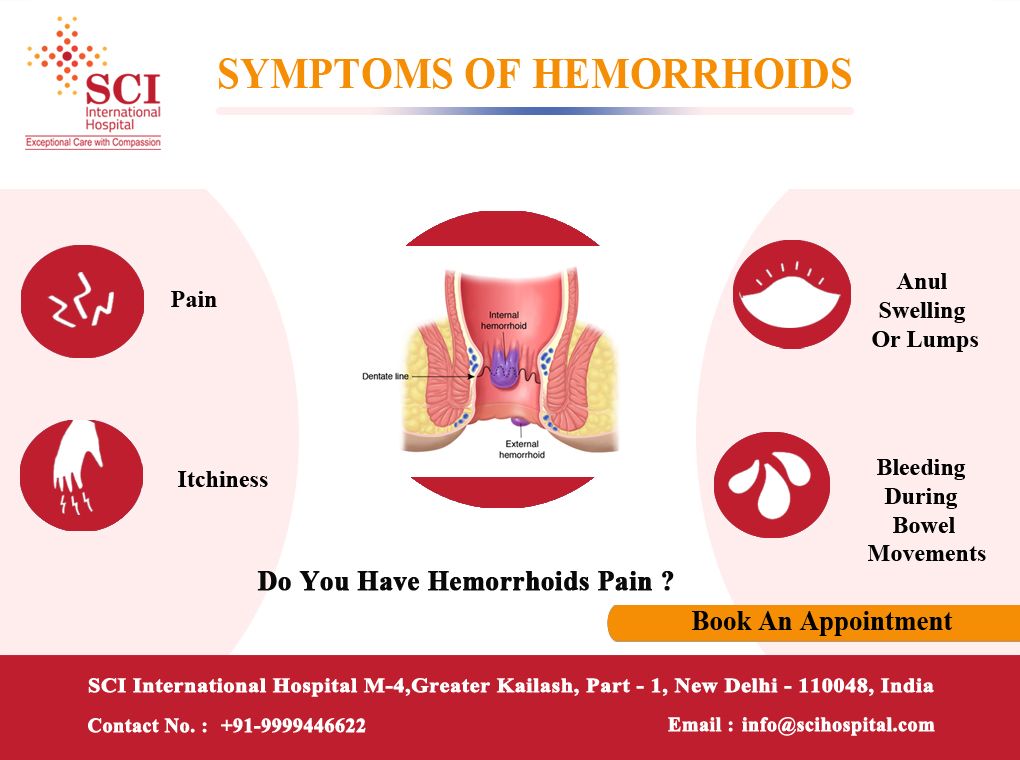
Venarus ® rushes to the rescue
Proper nutrition is a useful tool, but for the rapid normalization of a person’s condition in acute hemorrhoids, proper nutrition alone is clearly not enough.And this is where the Russian venotonic of complex action comes to the rescue – Venarus ® . The drug contains two bioflavonoids, the main one is diosmin and hesperidin, which enhances its effect, which help to increase the tone of the venous wall, improve blood circulation and lymph flow, relieve tissue swelling and quickly, within a week, relieve exacerbation symptoms (relieve itching, edema, reduce inflammation and bleeding) .. Take Venarus ® in a new convenient dosage of 1000 mg according to the scheme: 4 days, 3 tablets a day, morning, afternoon and evening, and 3 days, two tablets a day, morning and evening.As a rule, such a short intensive course is enough to get rid of pain, burning sensation and itching. And to combat the chronic course of the disease, Venarus ® is taken in a long course of 1 tablet per day.
And to combat the chronic course of the disease, Venarus ® is taken in a long course of 1 tablet per day.
Venarus ® is the right choice in the treatment of hemorrhoids.
Advertised
Hemorrhoid surgery
Many of us lead a sedentary lifestyle, which is greatly facilitated by the work in the office.We rarely think about the fact that inactivity can lead to such an unpleasant ailment as hemorrhoids.
According to all-knowing statistics, a quarter of the adult population of our planet is ill with hemorrhoids in various forms. You don’t want to be on that number, do you? Analyze if you are at risk. You are at risk for a sedentary lifestyle, in the absence of time for sports. Let’s try together to understand in more detail what hemorrhoids are, what is their prevention and what is the treatment of hemorrhoids.
Symptoms of hemorrhoids
Hemorrhoids can develop for many different reasons.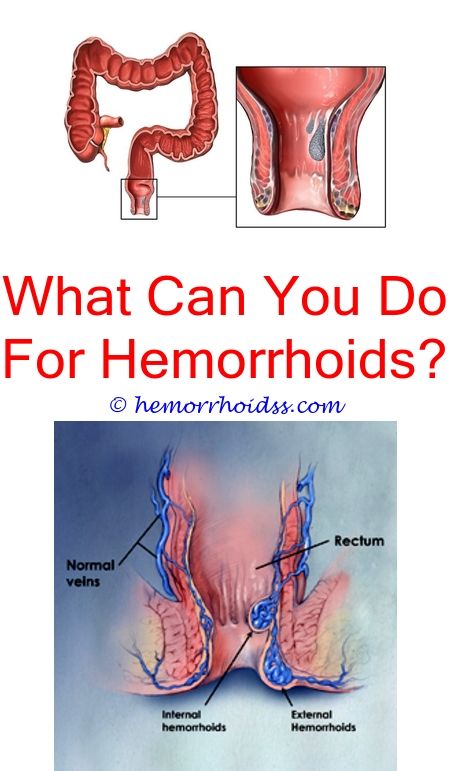 Here are the main reasons that can lead to the development of hemorrhoids:
Here are the main reasons that can lead to the development of hemorrhoids:
- Unhealthy diet (abuse of fatty, spicy food)
- Alcohol abuse
- Excess weight
- Excessive physical activity, due to which an increase in intra-abdominal pressure may occur
- Prolonged diarrhea
- Anal
Hemorrhoids do not come on suddenly, they start in stages.One of the first signs that doctors recommend paying attention to is the occurrence of mild itching in the anus. After a while, itching will be accompanied by pain when performing a bowel movement. These symptoms can be present in the patient for many years without causing him too much anxiety. Evidence that hemorrhoids have passed into the acute stage is the detection of blood drops in the feces.
Our recommendation: if you find blood in your stool, then you should immediately consult with a proctologist.Hemorrhoid treatment should be started as early as possible! Blood in the stool may indicate not only an exacerbation of hemorrhoids, but also about possible malignant formations in the intestine.
The appearance of drops of blood during bowel movements is only the initial stage of the disease, then the prolapse of hemorrhoids will begin.
What is a hemorrhoid?
Specialists-proctologists distinguish four stages of the development of this disease. Hemorrhoid treatment is determined by its stage.It is formed because the veins in the anus begin to swell and expand. Hemorrhoids are varicose veins in the rectum. Due to the indicated reasons (overweight, malnutrition, constipation, etc.), venous outflow is impaired, as a result of which a hemorrhoidal node is formed. Hemorrhoidal bleeding occurs due to inflammation and thinning of the walls of the nodes. The walls of the nodes are often inflamed, it should be remembered that the anus is a tender place, feces irritate the walls.As a result of irritation, the hemorrhoid begins to bleed.
- In the first phase of the disease, the patient develops pain before and after defecation and intermittent bleeding.

- In the second stage of the disease, hemorrhoids that crawl out when the muscles of the abdominal muscles are strained are added to the bleeding that occurs. The nodes at this stage of the disease are set in place on their own.
- At the third stage, hemorrhoids fall out after each act of defecation.Correct only with the help of hands. With the further development of the disease, the nodes fall out with each weight lifting and even with a strong cough.
- When the disease reaches the fourth stage, hemorrhoids fall out even in a calm state and fall out almost immediately after the node is repositioned. Frequent severe bleeding begins, and thrombosis develops rapidly.
Diagnosis of hemorrhoids
Doctors-proctologists diagnose hemorrhoids in three main ways: digital examination, anoscopy and sigmoidoscopy.
When conducting a digital examination, the proctologist carefully inserts a finger into the anus and probes the rectum, trying to assess how much its walls are stretched.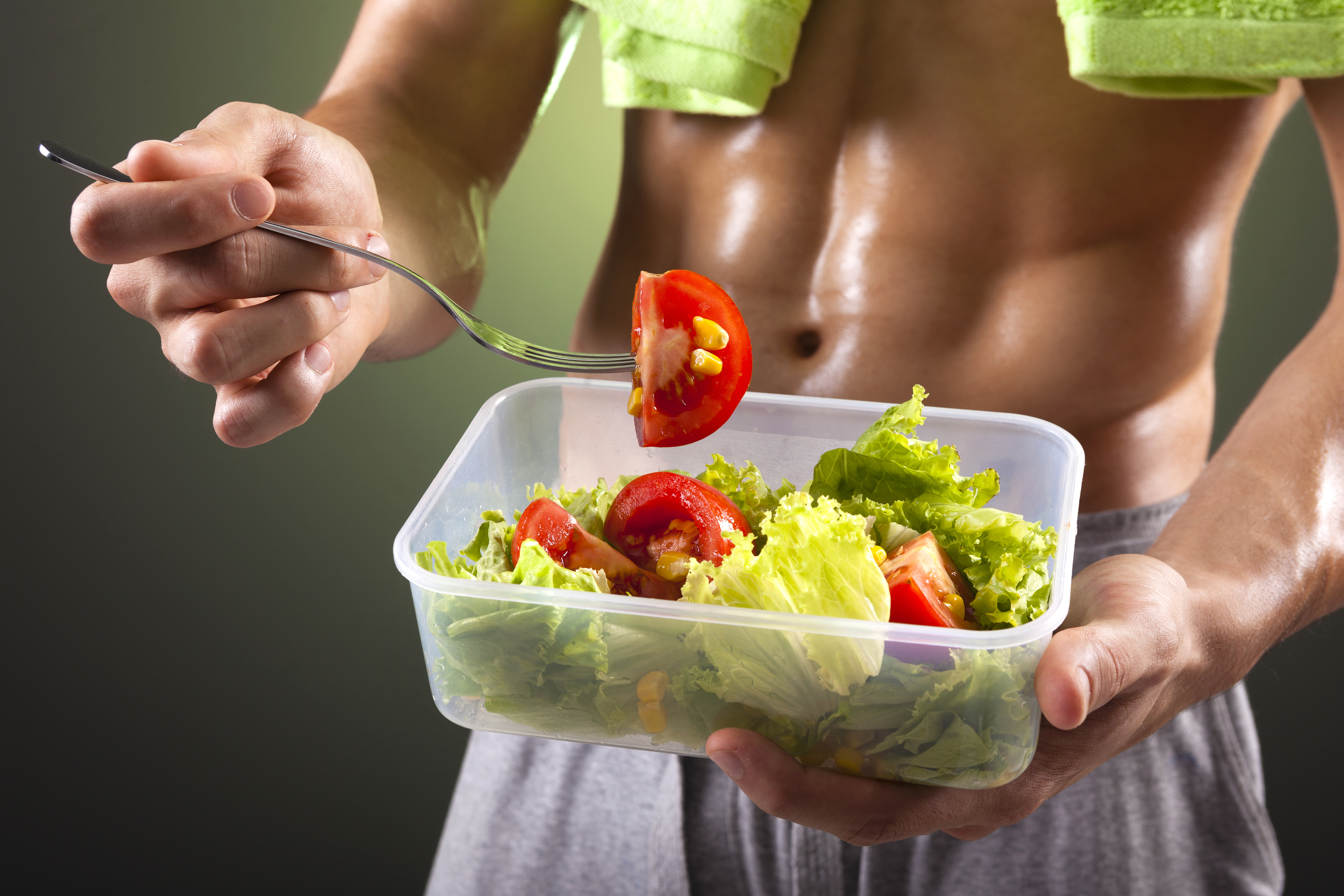 Next, the proctologist examines the contents of the rectum – the presence of blood, pus, feces, mucus, etc. After a digital examination, the proctologist performs an anoscopy.
Next, the proctologist examines the contents of the rectum – the presence of blood, pus, feces, mucus, etc. After a digital examination, the proctologist performs an anoscopy.
The investigated person is given a cleansing enema (microlax), after cleaning the rectum, an anoscope is inserted into the anus to a depth of 6-8 cm.Anoscope is a small special device, with its help the proctologist examines the patient’s rectum. Anoscopy can detect polyps, malignant neoplasms, fissures and hemorrhoids.
Hemorrhoid Treatment
A more accurate and modern type of rectal diagnosis is sigmoidoscopy. This method makes it possible to examine the rectum with a length of 25-30 cm from the anus. The rectoscope is equipped with a special optical device with which it is possible to identify any, even the smallest, changes occurring in the patient’s rectum.The next step after establishing an accurate diagnosis is to follow all the recommendations of the attending physician, he will select an individual scheme for the treatment of hemorrhoids for the patient.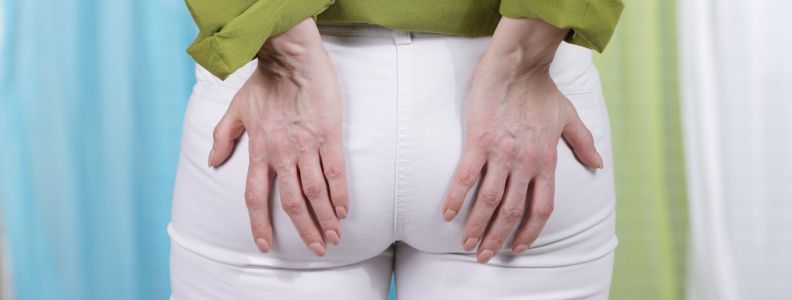
It is possible to take up the treatment of hemorrhoids at any phase of the disease, but still it is better not to delay the visit to the doctor, because the sooner the sufferer turns to the proctologist for help, the more successful and easy the treatment will become.
The acute stage of hemorrhoids can occur suddenly, for example, from a sudden weight lifting or from a violation of the diet.At this stage, the treatment of hemorrhoids is aimed at stopping the acute manifestations of the disease (thrombosis, bleeding, inflammation, etc.). After the disappearance of acute symptoms, the patient is advised to refrain from lifting weights, intensified sports and be sure to follow the diet recommended by the proctologist.
In cases where hemorrhoids become chronic and remission is often replaced by unexpected acute exacerbations, several methods of hemorrhoid treatment may be prescribed.In the initial stages of the disease (stage 1-2), when the patient suffers from an unpleasant burning sensation in the anus and minor bleeding, the proctologist will prescribe medication for hemorrhoids. If you do not start the disease and start treatment on time, follow the doctor’s recommendations (take the prescribed medications, give up fatty and spicy foods, lead an active lifestyle, try not to sit up, do not lift the weight with sudden jerks, do not engage in anal sex), then these tips will help the patient increase the intervals between exacerbations of the disease.To reduce pain, a variety of gels, ointments and special medicinal suppositories are prescribed. If the pain is unbearable, the doctor will perform medical anesthesia of the anus – several injections of a modern anesthetic are made into the tissue next to the anus.
If you do not start the disease and start treatment on time, follow the doctor’s recommendations (take the prescribed medications, give up fatty and spicy foods, lead an active lifestyle, try not to sit up, do not lift the weight with sudden jerks, do not engage in anal sex), then these tips will help the patient increase the intervals between exacerbations of the disease.To reduce pain, a variety of gels, ointments and special medicinal suppositories are prescribed. If the pain is unbearable, the doctor will perform medical anesthesia of the anus – several injections of a modern anesthetic are made into the tissue next to the anus.
In the treatment of hemorrhoids, one cannot do without drugs that prevent thrombosis, bleeding, relieve pain and inflammation. To prevent these symptoms, a proctologist may recommend suppositories and ointments: ultraproct, anuzole, hepatrombin, proctosedil, proctoglivenol, proctosan, etc.e. These medicines relieve pain and inflammation, dissolve a blood clot, strengthen the walls of hemorrhoidal vessels and prevent the exacerbation of the disease.
To achieve an effective result, the treatment of hemorrhoids should be comprehensive, combining the use of several drugs aimed at eliminating pain, stopping bleeding, and improving veins.
In cases where long-term drug treatment of hemorrhoids has not yielded results, it is necessary to switch to other methods of treating hemorrhoids.
Minimally invasive methods of treatment of hemorrhoids
The patient is given a small cleansing enema. Then the doctor takes a ligator, on the working part of which a latex ring is put on. The hemorrhoid is pulled into the ligator, the ring is put on the base of the knot and tightened. After about 2-3 days, the hemorrhoid falls off along with the latex ring. In its place, a wound remains, which quickly heals on its own.In one session, you can put only 1-2 rings, and if the patient has 3 or more hemorrhoids, then after 2-4 weeks the procedure for ligating the hemorrhoids must be repeated. Such a step-by-step treatment of hemorrhoids can take up to 1-2 months. The advantage of the hemorrhoids ligation method is: low pain and low trauma, bloodlessness, without the need for general anesthesia, hospitalization and interruption of the patient’s professional activity. These techniques make it possible to cure stage 1-3 hemorrhoids.By applying latex rings, hemorrhoids are removed.
Such a step-by-step treatment of hemorrhoids can take up to 1-2 months. The advantage of the hemorrhoids ligation method is: low pain and low trauma, bloodlessness, without the need for general anesthesia, hospitalization and interruption of the patient’s professional activity. These techniques make it possible to cure stage 1-3 hemorrhoids.By applying latex rings, hemorrhoids are removed.
As a method of choice, in stage 1-2 hemorrhoids, sclerotherapy is sometimes performed – a solution of ethoxysclerol is injected into the hemorrhoid, which causes emptying, adhesion and hardening of the hemorrhoid. This method is used when drug treatment is ineffective. After sclerotherapy, doctors recommend following the recommendations: reduce physical activity, adhere to a diet, and not be in a sitting position for too long.
Such modern minimally invasive technologies as dearterization of hemorrhoids under the control of Doppler ultrasonography (HAL-RAR) and destruction of hemorrhoids using a laser have significantly reduced the trauma and painfulness of operations, shortened the time of postoperative recovery and improved the results of hemorrhoids treatment.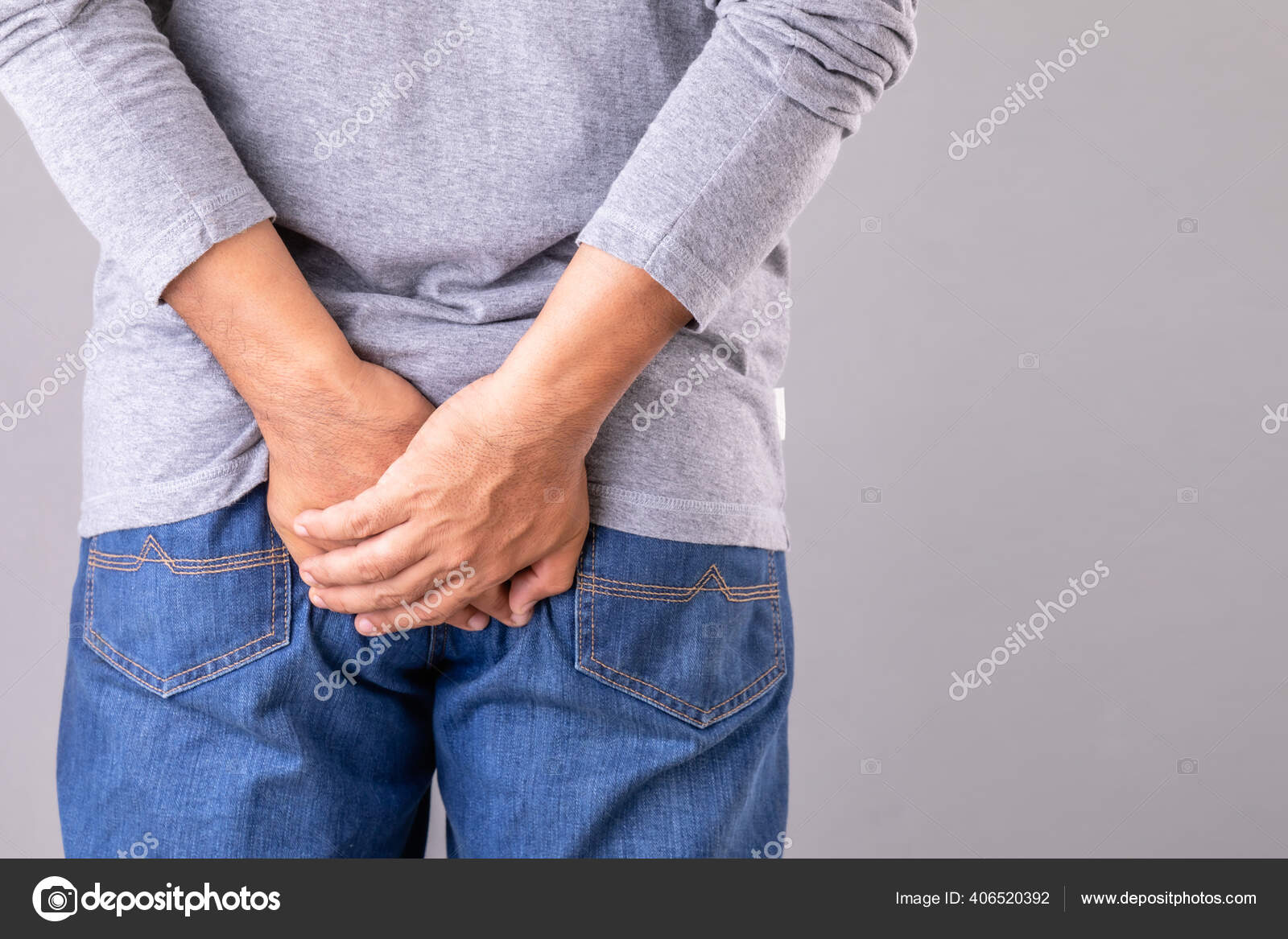 Our experience has shown that with a combination of HAL-RAR methods and destruction of hemorrhoids using a laser, it is possible to obtain low trauma, with a short recovery time, and good results in the treatment of stage 3 and 4 hemorrhoids.
Our experience has shown that with a combination of HAL-RAR methods and destruction of hemorrhoids using a laser, it is possible to obtain low trauma, with a short recovery time, and good results in the treatment of stage 3 and 4 hemorrhoids.
Hemorrhoidectomy
This is the removal of hemorrhoids using surgery.
Hemorrhoidectomy is used for advanced hemorrhoids (stages 3 and 4). With the help of a scalpel, scissors, electrocoagulation, hemorrhoids are removed. The use of modern technologies, Ligasure, ultrasonic scissors, has reduced the trauma and operation time. This operation is performed under general or spinal anesthesia for 30-60 minutes.
At the site of the removed node, several small wounds are formed, which are subsequently healed with the help of conservative therapy (rectal suppositories, ointments, baths). In addition, pain relievers and laxatives are prescribed to normalize stools and facilitate bowel movements after surgery.
The positive outcome of the operation has been observed for several years. But if you do not adhere to medical recommendations, then hemorrhoids can begin to develop again.
Only a proctologist can figure out which method of treatment is suitable for a patient.
Prevention of hemorrhoids
To prevent hemorrhoids from developing, do water procedures more often. Taking a warm bath improves blood microcirculation. Do not forget about personal hygiene after having a bowel movement. It is necessary not only to use multilayer toilet paper, but also to wash off with cool water.Prolonged constipation can lead to the formation of anal fissures, which can develop into hemorrhoids. Diarrhea is no less dangerous than constipation – there is a violation in the intestinal microflora, as a result of which an infection can be introduced into the walls of the colon. Doctors advise you to follow a balanced diet, carefully monitor your stools, periodically take medications that help normalize the intestinal microflora.
To prevent the development of hemorrhoids, doctors advise not to push while having a bowel movement.The fact is that increased muscle tension can also lead to bleeding and the development of cracks. It is also required to beware of hypothermia of the body – it can cause exacerbation and development of acute hemorrhoids.
People who have already encountered the problems of hemorrhoids should always adhere to a balanced diet, exclude spicy foods and alcoholic beverages from their diet. Alcohol and overuse of spices increase blood flow to the anus, and this is fraught with severe bleeding.Hemorrhoids are classified as occupational diseases of drivers. So for those who spend a lot of time driving, we recommend taking frequent breaks and not neglecting exercise.
Do not self-medicate – as soon as you suspect that hemorrhoids are starting to develop, you should immediately consult with a specialist. Only a proctologist can reliably establish a diagnosis, determine which treatment for hemorrhoids is right for you.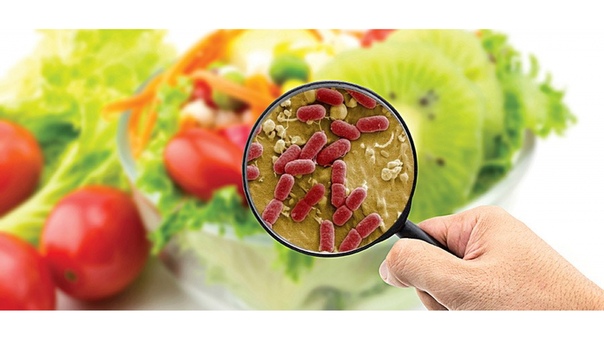
You can make an appointment with a doctor by phone, through an online appointment or in a mobile application.
Hemorrhoid treatment
Among human diseases, those about which it is not customary to speak stand apart. At the same time, the patient can live with pain and anguish for many decades, and cannot seek help from a doctor due to excessive shyness. One of these diseases is hemorrhoids. The term “hemorrhoids” itself means a pathological increase in hemorrhoids, which is manifested by periodic bleeding from them, their prolapse from the anus, frequent inflammation and pain.The reason for the increase in hemorrhoids is impaired blood circulation in the cavernous formations of the rectum and dystrophic processes in the fibromuscular apparatus that holds the hemorrhoids in the anal canal. Adverse factors include a sedentary lifestyle, unhealthy diet, constipation, pregnancy, alcohol abuse.
Hemorrhoidal disease is a widespread disease in the industrialized countries of the world.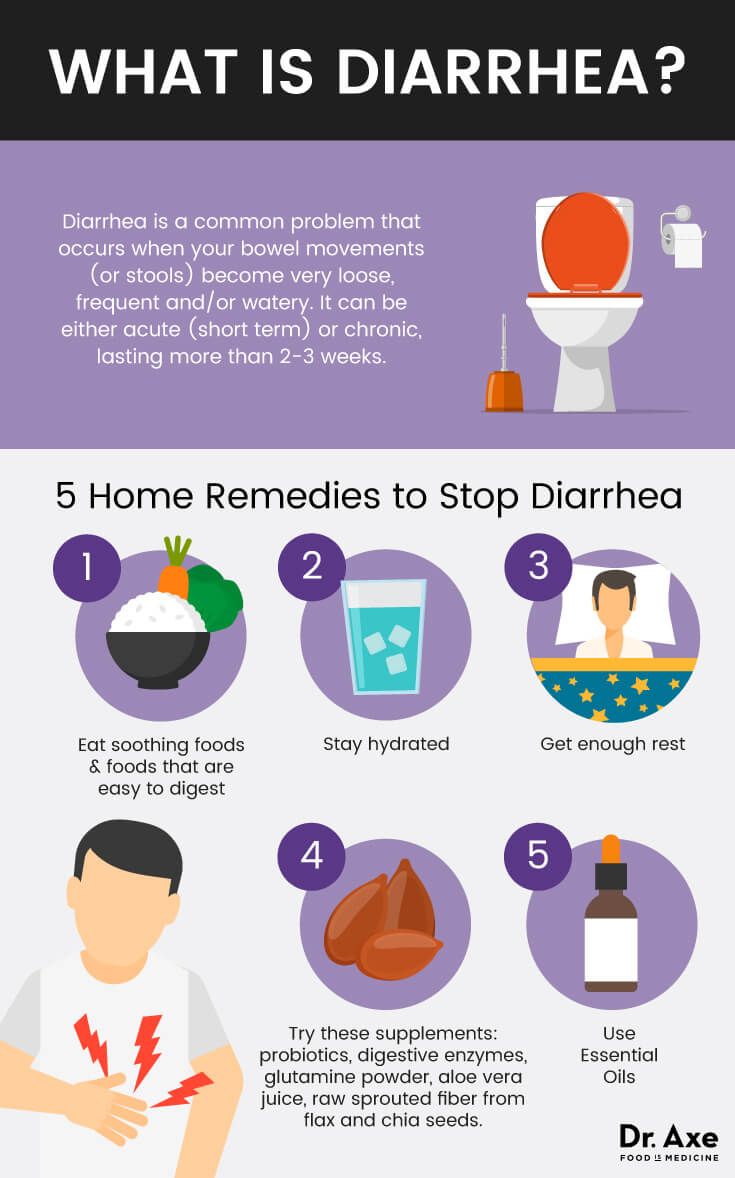 Hemorrhoids occur in people of all ages, but they are much less common in people under the age of 30 than in people over 30.Most often, the disease occurs in patients aged 30-60 years, that is, in patients of working age. In the development of hemorrhoids, four stages are distinguished, depending on the size of the nodes and the nature of the manifestation of the disease.
Hemorrhoids occur in people of all ages, but they are much less common in people under the age of 30 than in people over 30.Most often, the disease occurs in patients aged 30-60 years, that is, in patients of working age. In the development of hemorrhoids, four stages are distinguished, depending on the size of the nodes and the nature of the manifestation of the disease.
Previously, the methods of treatment of various stages of hemorrhoids were distributed as follows:
Stage I hemorrhoids require only conservative treatment.
II-III-stage hemorrhoids – can be cured radically – by surgery (removal of nodes), or by palliative methods of treatment (sclerotherapy or latex ligation), which requires multiple repetitions, and has a high degree of recurrence of the disease.
IV – stage of hemorrhoids – requires only surgical treatment.
Any technique for removing the hemorrhoidal plexus (“hemorrhoidectomy” operation) is associated with severe postoperative pain, regardless of what equipment is used to remove the nodes (ultrasonic scalpel, Liga-Sure apparatus, etc. ). A hospital bed stay is seven to ten days. The development of complications regardless of the type of intervention after hemorrhoidectomy occurs in 34-41% of patients.The average period of disability after hemorrhoidectomy is at least 4 weeks. Many patients prefer to live with the hemorrhoid problem rather than see a doctor.
). A hospital bed stay is seven to ten days. The development of complications regardless of the type of intervention after hemorrhoidectomy occurs in 34-41% of patients.The average period of disability after hemorrhoidectomy is at least 4 weeks. Many patients prefer to live with the hemorrhoid problem rather than see a doctor.
Patients now have a choice. The above-described excision of the nodes was replaced by the HAL technology (ligation of hemorrhoidal arteries) or THAD – transanal disarterization of hemorrhoids of hemorrhoidal arteries under the control of Doppler ultrasound. Today it is the most effective, low-traumatic way of treating all stages of hemorrhoids.
In 1995, Japanese surgeons, K. Morinaga, K. Hasuda and T. Ikeda, developed a new technology for the treatment of hemorrhoidal disease, which was called the HAL technology (hemorrhoidal artery ligation – ligation of hemorrhoidal arteries under the control of Doppler ultrasound).
In the special medical literature, there is a name – THD (Transanal hemorrhoidal dearterialisazation – transanal dearterization of internal hemorrhoids).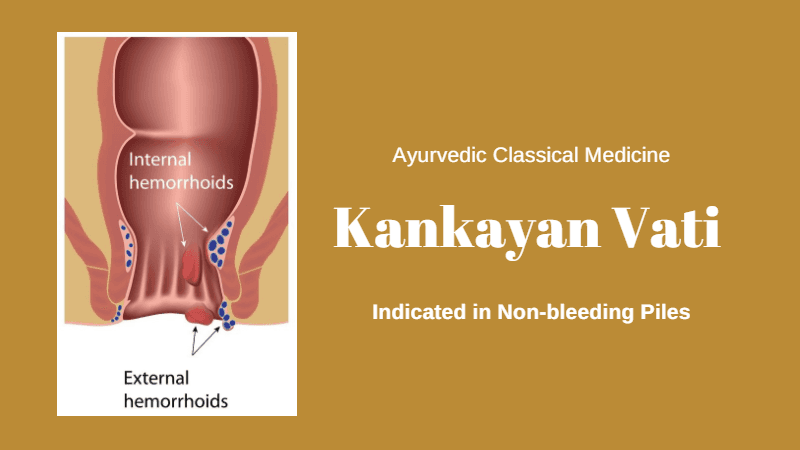
To date, using color duplex scanning, it has been established that the location and number of branches of the superior rectal artery is quite variable, but they provide the main blood flow to the internal hemorrhoidal plexus.That is why precise identification of each arterial “branch” is required. The termination of the pathological blood flow, without disturbing the venous outflow, leads to the normalization of blood circulation in the system of the internal hemorrhoidal plexus.
Since 2000, the Agency for Medical Innovation (A.M.I.) has introduced the HAL methodology around the world. At the end of 2005, the HAL technology was supplemented with the RAR (anal canal restoration) method – lifting, that is, “tightening” of the internal hemorrhoids.
The technique began to combine a combination of ligation of the hemorrhoidal artery and transanal mucopexy of the prolapsing tissue. HAL – effective for stage II and III hemorrhoids. The HAL-RAR technique is used for stage III and IV hemorrhoids. The HAL-RAR method is one of the most effective and least aggressive methods of hemorrhoid treatment. The HAL-RAR procedure takes 20-30 minutes and can be performed under various types of anesthesia. The type of anesthesia is selected individually for each patient.
The HAL-RAR method is one of the most effective and least aggressive methods of hemorrhoid treatment. The HAL-RAR procedure takes 20-30 minutes and can be performed under various types of anesthesia. The type of anesthesia is selected individually for each patient.
Advantages of Hemorrhoid Disarterization Method (HAL)
• Impact on the cause of the disease: the pathological flow of arterial blood to the hemorrhoid decreases.
• The anatomical relationships of tissues are restored due to fixation of internal hemorrhoids to the muscular wall of the lower ampullar rectum with sutures
• Improves venous outflow of blood from internal hemorrhoids due to restoration of anatomical relationships
• Lack of staged treatment
• Possibly, use in case of concomitant pathology of the anal canal (anal fissure, rectal fistula)
• The absence of wounds in the rectum – pain syndrome after the procedure – is negligible.
• Short procedure time.
• 12-18 hours of day hospital stay
• Return to work in 1-2 days.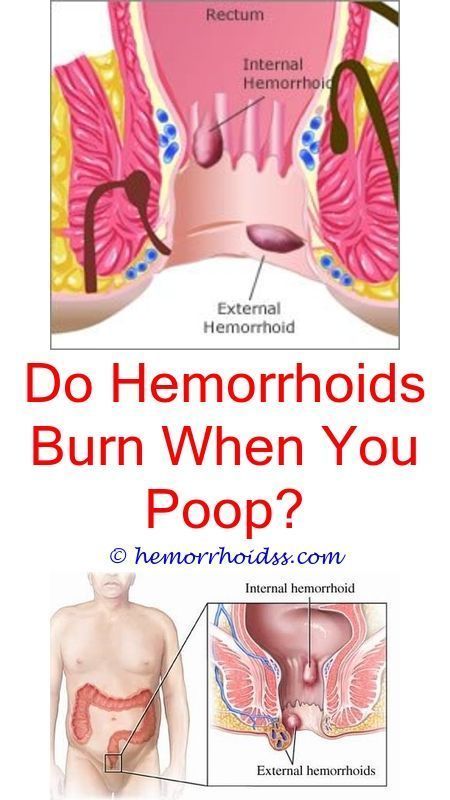
• Proven by randomized studies, very high efficiency of the method all over the world.
D.O. Wagner, endosurgeon, phlebologist surgeon, head of the Regional Outpatient Surgery Center of the Regional Consultative and Diagnostic Center
90,000 we answer the most popular questions about the disease
Hemorrhoids in the initial stages can develop completely unnoticed by the patient.People do not experience significant discomfort …
… it is only after a bowel movement that they may experience unpleasant sensations that pass quickly at first. Further, with the development of the problem, itching may occur in the anus, as well as pain. Over time, after a bowel movement, aching pains in the anus begin to intensify, there may be a feeling of a foreign body in the anus.
When a person develops a disease, they begin to notice blood on their underwear or toilet paper. These can be smears or small droplets, you should definitely pay attention to them. The sooner the patient gets to the appointment, the faster the treatment will pass.
These can be smears or small droplets, you should definitely pay attention to them. The sooner the patient gets to the appointment, the faster the treatment will pass.
All of the above symptoms may indicate the presence of hemorrhoids. However, only a doctor can make an accurate diagnosis, excluding cracks and other diseases. Therefore, in no case should you go to the pharmacy and self-medicate. A visit to an experienced specialist will allow you to establish an accurate diagnosis and get the most effective treatment regimen.Only a specialized specialist with sufficient experience is able to prescribe drugs that will be most effective in each specific case.
What are hemorrhoids?
This disease is a pathological change in the external and internal hemorrhoids. The cause of pronounced pain is precisely the external nodes.
Internal nodes are located in the submucosa of the rectum. It is not possible to detect them at the initial stages.They become visible to the naked eye only at the later stages of the development of the disease. The presence of blood in the stool and the occurrence of pain during bowel movements are the main symptoms. Untimely treatment of the disease in the early stages leads to the prolapse of hemorrhoids from the anal passage.
The presence of blood in the stool and the occurrence of pain during bowel movements are the main symptoms. Untimely treatment of the disease in the early stages leads to the prolapse of hemorrhoids from the anal passage.
External hemorrhoids form nodes that arise in the inferior venous plexus, which is located directly at the anus. A specialist is able to visually examine such a disease, since the formations are outside the rectum.Most often, bleeding with such pathological changes is absent. In this case, patients begin to be bothered by acute pains. Hemorrhoids can evolve into oncology, which can occur due to the possibility of injury by underwear and the occurrence of inflammatory processes.
In some patients with combined hemorrhoids. In this case, changes occur in the rectum and in the subcutaneous venous plexus located in the anal region.
Why does hemorrhoids develop?
Hemorrhoids can occur for completely different reasons.
The most common factors that have caused changes in blood supply, congestion and the formation of hemorrhoids are:
- sedentary lifestyle.
People who, due to their profession or other reasons, move little are more prone to hemorrhoids. Deterioration of pelvic blood flow is a consequence of prolonged sitting or standing, which provokes the formation of hemorrhoids;
- hard physical labor. Lifting weights and other loads on the body can cause the development of the disease;
- any violation of the defecation process.Diarrhea and diarrhea cause changes in pressure in the veins, so hemorrhoids can form;
- overheating or hypothermia of the body. They can contribute to the deterioration of blood supply to the pelvic area;
- spicy food, alcohol. They cause blood to flow to the rectum, which can cause its tissues to expand. With a lack of fiber in the diet, constipation is possible, an excessive fat content can cause diarrhea;
- anal sex, leading to trauma to the rectum;
- the presence of other diseases, including neoplasms in the pelvic area, liver disease.
Why does hemorrhoids appear after childbirth?
During pregnancy, there is an increase in pressure on the pelvic organs. As a result, there is compression in the rectum of hemorrhoidal veins, since the uterus increases significantly in size. As a result, the outflow of blood from the rectum is disturbed, there is overflow of blood vessels, stagnation and the formation of nodes.
As a result, there is compression in the rectum of hemorrhoidal veins, since the uterus increases significantly in size. As a result, the outflow of blood from the rectum is disturbed, there is overflow of blood vessels, stagnation and the formation of nodes.
Pregnancy is often accompanied by constipation. In this case, the feces injure the cavernous bodies when the walls of the rectum are stretched.In the last trimester of pregnancy, the lifestyle of a woman in a position most often becomes inactive, which also has a negative effect on her health.
During childbirth, there is a strong tension in the muscles of the perineum. This becomes the cause of injury to the cavernous bodies of the rectum. If the muscles of the perineum are severely stretched, the likelihood of a weakening of the anal sphincter increases, which can lead to prolapse of hemorrhoids.
It is important to pay careful attention to your own health after giving birth.If you have the slightest discomfort in the anus, pain or blood in the stool, you should immediately consult a doctor while wearing underwear. Any delay will lead to the further development of the disease, which will subsequently significantly complicate the treatment.
Any delay will lead to the further development of the disease, which will subsequently significantly complicate the treatment.
How long does hemorrhoids develop?
This disease has two forms: acute and chronic. At the first, acute inflammation of the nodes occurs, their necrotic changes are possible. People are in great pain.
The chronic stage can last for a very long time – for months or even years.From time to time, exacerbations in the form of inflammation or loss of nodes are possible. If you follow medical recommendations during periods of remission, you may not feel any discomfort at all in the presence of hemorrhoids.
When is the operation needed? Do hemorrhoids need to be removed?
There are several stages in the development of the disease:
At the first, there are no pronounced symptoms. As a rule, they only appear in certain situations. The patient may experience itching, burning, and discomfort during bowel movements. Treatment at this stage allows you to quickly get rid of the problem.
Treatment at this stage allows you to quickly get rid of the problem.
At the second stage, there is a significant increase in the size of the nodes. Due to the thinning of the walls of the nodes during bowel movements, hypothermia, overheating or physical exertion, traces of blood appear on toilet paper or underwear. There is a possibility of knots falling out during bowel movements, but they are able to adjust themselves into place. Conservative treatment at this stage is also effective. Modern medicine has effective methods of dealing with the manifestations of hemorrhoids.
The third stage is characterized by dystrophic changes in the anal sphincter. As a result, the knots that have dropped out can be set back exclusively manually. Conservative treatment at this stage is no longer able to be effective. The patient experiences severe itching, pain, and bleeding becomes more profuse.
At the fourth stage, the reduction of the nodes inward is almost impossible due to the weakening of the muscles of the anus. Not only nodes can be inflamed, but also adjacent tissues.
Not only nodes can be inflamed, but also adjacent tissues.
The first two stages of the disease are successfully treated by medicine today. If you run the problem before the third or fourth, then you cannot do without surgical intervention and removal of the nodes. Therefore, it is extremely important at the first symptoms to immediately consult a proctologist.
Can hemorrhoids be cured without surgery?
If the disease is in the first or second stage, it is worth asking your doctor about surgical treatment. Conservative methods work perfectly in such a situation and provide an opportunity for patients to completely get rid of the problem.
For the treatment of the disease in the initial stages, drugs are widely used that are capable of:
- to relieve pain, relieve inflammation and edema;
- to prevent the formation of blood clots;
- improve the condition of blood vessels, make their walls more durable;
- to normalize the stool;
- Stimulate blood supply.

How are hemorrhoids treated?
The disease is treated with two methods: conservative and surgical.In the early stages, patients are prescribed a treatment regimen that includes drugs for oral and external use, as well as injections. The choice in favor of certain drugs should be made by an experienced specialist after examination and thorough diagnosis. The treatment regimen for patients is individual and is determined by the clinical picture, as well as by the presence of other concomitant diseases (cracks, etc.), if any.
During surgical treatment, the nodes are excised. Latex ligation and infrared coagulation of hemorrhoids (not removal or laser treatment) are highly effective and minimally invasive methods in the treatment of proctological diseases, allowing the patient to be cured in the safest ways.After undergoing rehabilitation, the patient must strictly adhere to medical recommendations so that the disease does not develop again.
Can hemorrhoids be massaged?
Massage for this disease is an effective therapeutic procedure, this procedure is performed according to the doctor’s prescription and is indicated if the disease is not in an acute stage.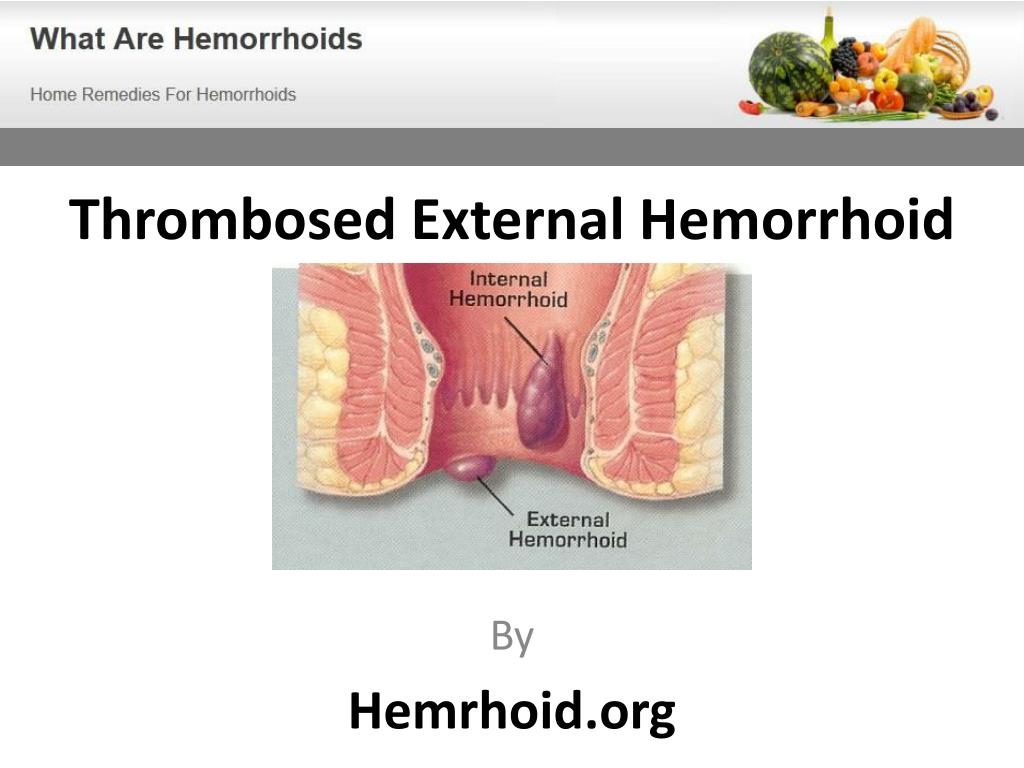 With the help of this effect, you can relieve the patient of constipation, soften the feces. It is also used to stimulate blood supply, eliminate congestion, and increase tissue tone.
With the help of this effect, you can relieve the patient of constipation, soften the feces. It is also used to stimulate blood supply, eliminate congestion, and increase tissue tone.
It is important that this procedure is carried out by an experienced technician.
The impact of massage in case of illness has some contraindications:
- acute form;
- presence of intestinal and stomach pathologies;
- the presence of neoplasms in the pelvic area;
- diseases of the gastrointestinal tract;
- tuberculosis.
Do self-medication and folk remedies help in the fight against hemorrhoids?
This disease is serious, since tumor formations can degenerate into oncology.Therefore, self-medication is not only useless, but also completely irresponsible. It is important, when symptoms appear, discarding false shame, to contact a specialized specialist. The doctor will be able to make a comprehensive diagnosis, establish the degree of the disease and prescribe an effective treatment.
Self-medication and folk remedies for hemorrhoids are categorically not worth using. They can only be auxiliary methods against the background of medications. But in any case, the use of traditional medicine methods must be approved by the attending specialist.
How old does hemorrhoids appear?
This disease is most often seen in patients aged 30-50 years. Men are affected four times more often than women.
Why does hemorrhoids bleed?
As already mentioned, at the second stage, the thinning of the tissues of the nodes begins. This leads to the appearance of blood. This discharge is first noticeable on toilet paper or underwear. As the disease progresses, such bleeding becomes more pronounced.
Prevention of hemorrhoids
It is important to avoid constipation. To do this, you will need to introduce fiber-rich foods into your daily diet. It is important to eliminate alcohol and spicy foods, as well as seasonings. If you are prone to constipation, it is recommended to increase the amount of daily fluid intake. You need to drink clean water in the amount of 6-8 glasses a day.
You need to drink clean water in the amount of 6-8 glasses a day.
In the process of defecation, you should not push, everything should happen naturally. Otherwise, increased pressure will be created in the veins of the rectum, which is not safe.It is important to carry out defecation in a timely manner, it should not be postponed, as this can lead to hardening of feces, which, in turn, will complicate the process of their elimination.
Do not get carried away with even the safest laxatives. Their reception can be one-time, if necessary. It is important to establish the body’s work so that all processes are regular and natural.
If you have a sedentary lifestyle, it is recommended to do daily exercise or other physical activity.If the work involves the need to stand or sit for a long time, you should take a short break every one and a half to two hours. It is important to avoid standing or sitting for too long. Otherwise, it will not be possible to avoid an increase in pressure on the venous system of the rectal region.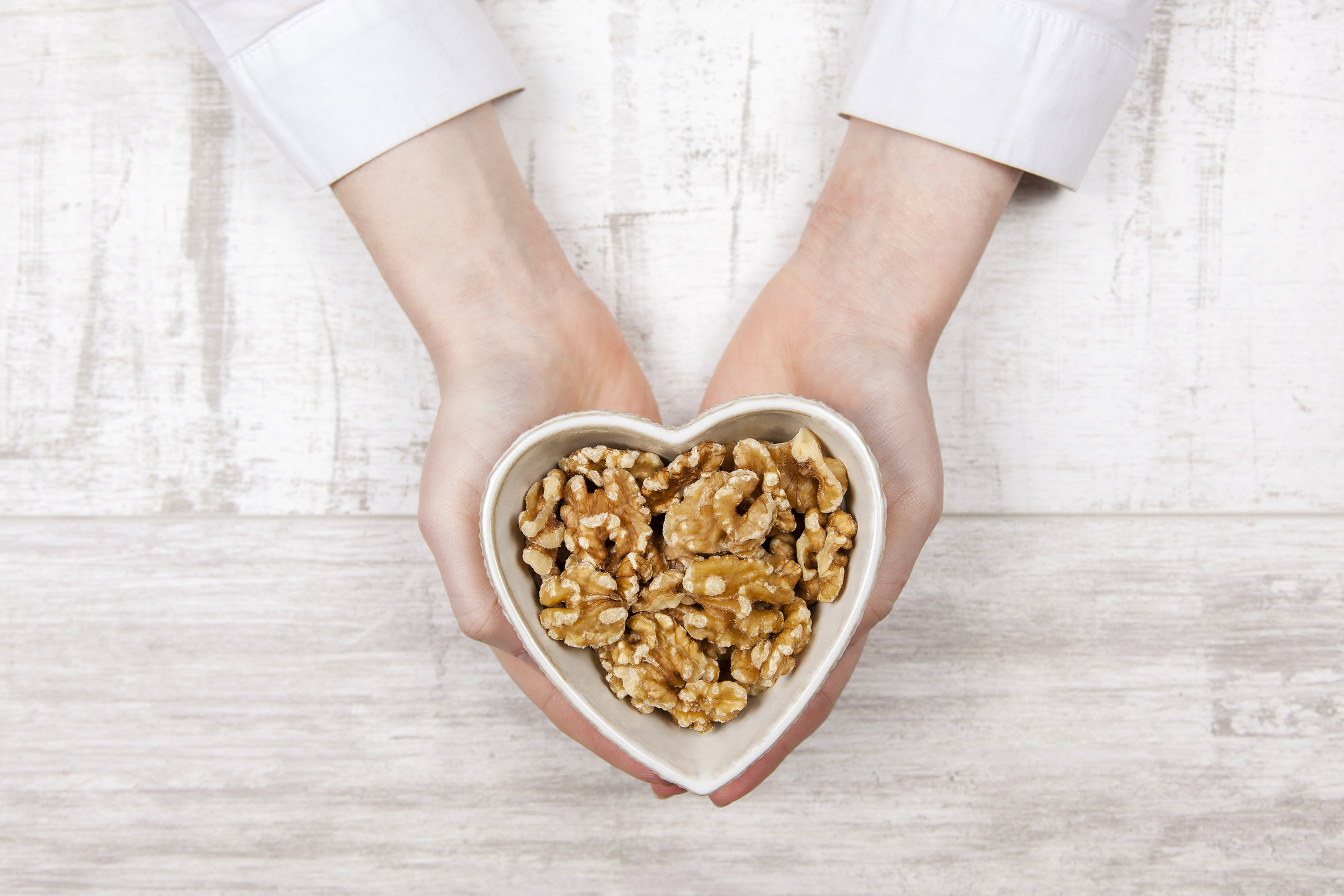
Are hemorrhoid ointments effective?
Modern pharmaceutical companies have developed various drugs to combat this disease. They are effective if you undergo complex treatment under the guidance of a specialized specialist.You shouldn’t just go to the pharmacy and buy any ointment. Without being a specialist in this field, you will not be able to determine the clinical picture. Therefore, there is no need to talk about the correct choice of an ointment or other drug.
Self-medication will not help get rid of the disease, since patients with hemorrhoids need complex therapy. Such a treatment regimen should be prescribed by an experienced specialist in accordance with the peculiarities of the clinical picture of the disease. Hemorrhoids of the first and second stages respond well to treatment.You just need to find time to visit a doctor and consult. Today, there are a sufficient number of drugs for the treatment of hemorrhoids. Experienced doctors are able to effectively help every patient faced with this problem.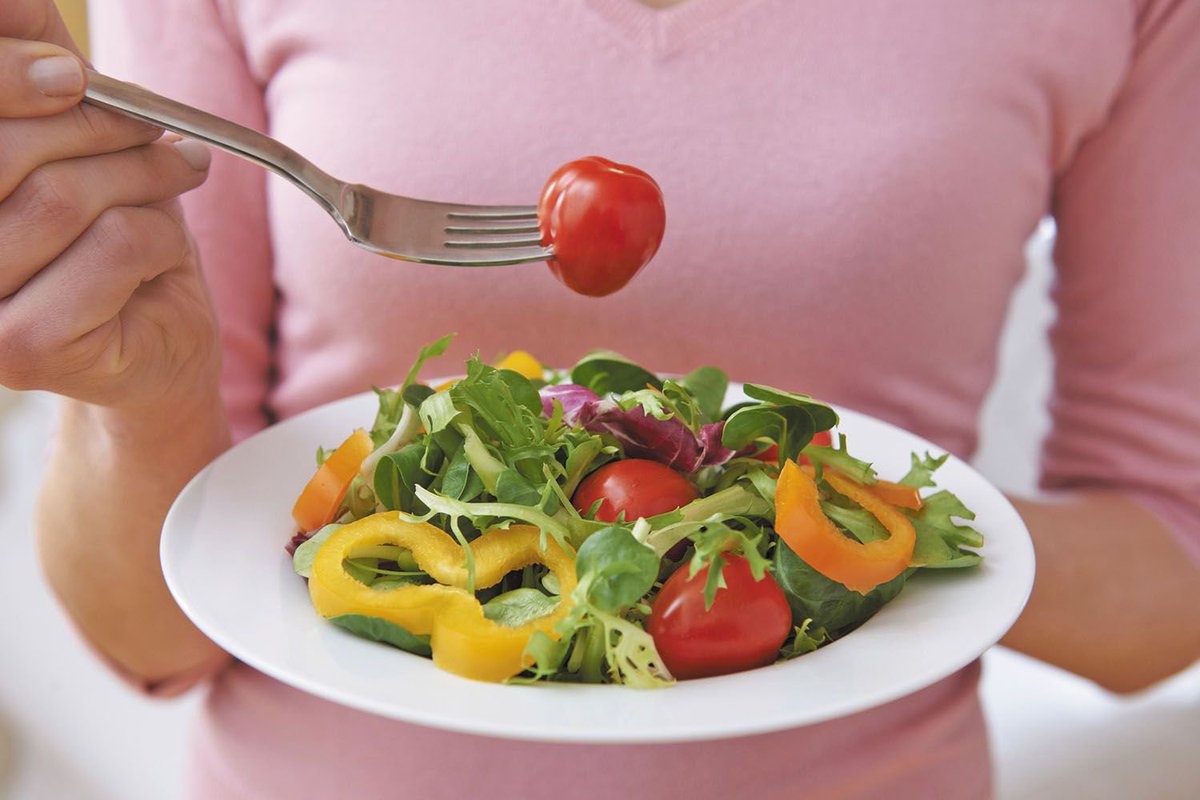
Remember, the earlier you go to the proctologist, the faster and easier the treatment process will be. It is not worth starting the disease, as this may lead to the need for surgical intervention. Also, hemorrhoids are dangerous in that they are able to degenerate into oncology.
Which doctor should I contact with hemorrhoids?
In the event of the first symptoms or exacerbation of an existing disease, it is important to immediately make an appointment with a proctologist. An experienced specialist will help eliminate pain sensations and make an effective treatment regimen. It is important to follow the appointments, as well as to normalize the diet, to ensure the regularity of the stool and the absence of constipation. Experienced specialists will be able to effectively help each patient. The main thing is not to delay the visit to the doctor.
Article rating:
4 out of 5 based on 9 ratings
Ask your question to the proctologist
“ON Clinic”
Hemorrhoids: types, stages, treatment
Schlosser Kirill Vladimirovich
Surgeon, Proctologist
Hemorrhoids are a pathological expansion of the cavernous (that is, cavernous or spongy in structure) vascular plexuses located in the anus, with the formation of external and / or internal nodes.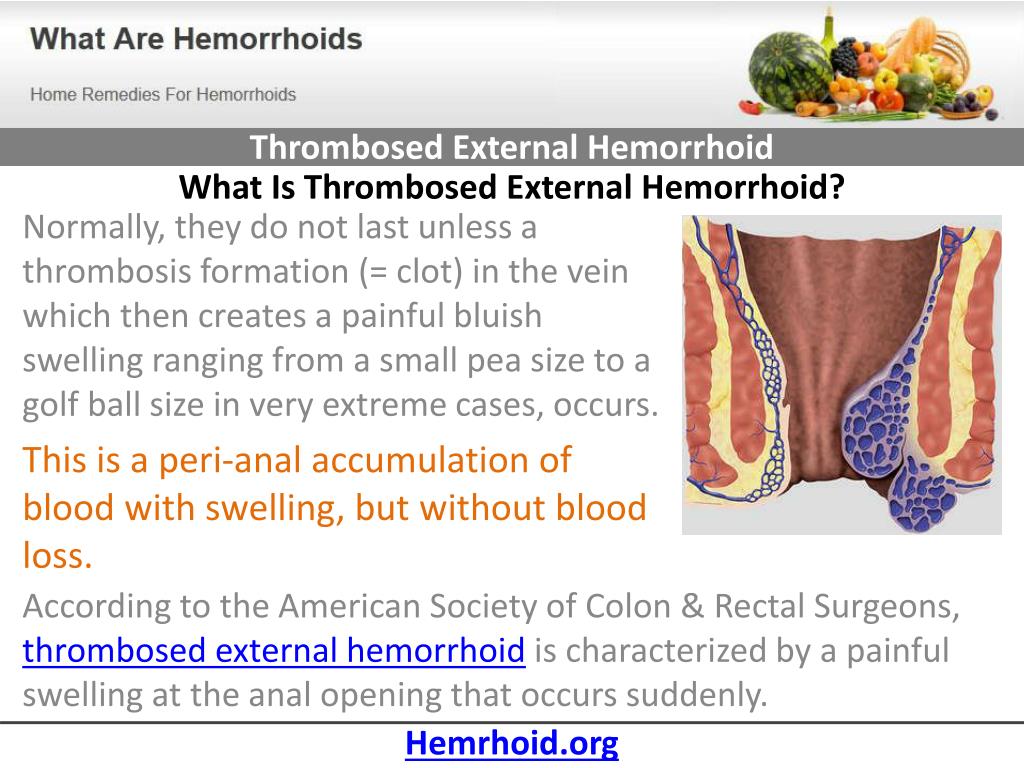
Causes of hemorrhoids
- Lifestyle associated with prolonged static stress: hemorrhoids are a “professional” disease of drivers, office workers, security guards, etc.
- Excessive physical activity, lifting weights, sharp tension.
- Excessive consumption of alcohol, spicy and pickled foods.
- Constipation, straining with difficult bowel movements (bowel movement).
- Pregnancy and childbirth.
- Heredity.
Hemorrhoid symptoms
- Discomfort or pain in the anus.
- Sensation of a foreign body in the anal canal.
- Excretion of blood during bowel movements, admixture of blood in the stool.
- Nodules in the anal area.
Classification of the disease
Acute hemorrhoids are thrombosis of hemorrhoids. External manifestation is a dense, painful external or internal bluish knot filled with a blood clot.
Acute hemorrhoids are divided into three degrees of severity:
I degree – Thrombosis of external or internal hemorrhoids without inflammation.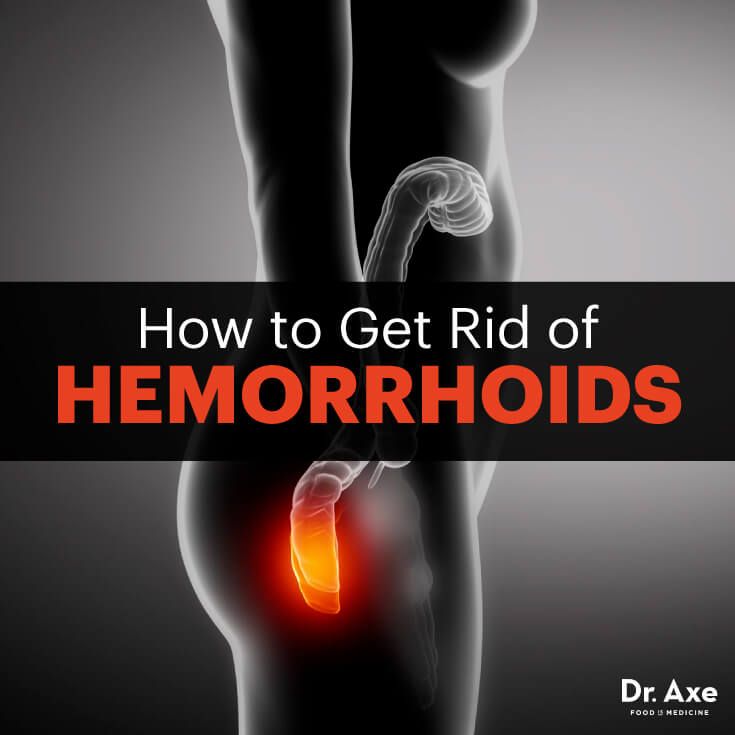
II degree – Thrombosis, complicated by inflammation of hemorrhoids.
III degree – Thrombosis of hemorrhoids, complicated by inflammation of the subcutaneous tissue in the perianal region.
Therapeutic tactics involves both a comprehensive conservative treatment and a surgical aid .
Indication for surgical treatment is acute thrombosis of the hemorrhoid. In the early stages of the disease, optimally up to 72 hours, thrombectomy is indicated – removal of thrombotic masses.It is performed on an outpatient basis. The operation leads to a significant reduction in the duration of treatment.
At later stages, either the removal of the thrombosed node or conservative treatment followed by elective surgery is possible. Hospitalization is indicated for the III degree of the disease, when the inflammatory process spreads to the surrounding tissues of the perianal region and the anal canal.
Stages of development of the disease
Chronic hemorrhoids are divided into four stages.
Characteristic symptoms:
Stage I – Recurrent bleeding from the rectum without prolapse of hemorrhoids. The method of treatment is conservative therapy.
Stage II – Hemorrhoids fall out during bowel movements, but they adjust on their own. Bleeding may or may not be present. Also, the loss of nodes is possible with intense physical activity.
At the second stage, conservative treatment and minimally invasive proctological manipulations are combined, which specialists of the XXI Century Medical Center carry out in an outpatient clinic.
Stage III – Manual assistance is required to reposition the nodes into the anal canal. Bleeding becomes more profuse, there is a periodic inflammation of the hemorrhoids.
Surgical treatment. Operations are performed by surgeons-proctologists at the Outpatient Surgery Center of the XXI Century Medical Center.
IV – Hemorrhoids are constantly in a prolapsed state. This is the most difficult stage. Loss occurs even with the slightest exertion: a change in body position, cough, gas escape from the intestines. The walls of the node are constantly injured and inflamed.
The walls of the node are constantly injured and inflamed.
Only surgical treatment is indicated.
Treatment of hemorrhoids
Methods for diagnosing proctological diseases
- During an external examination, the doctor pays attention to the shape of the anus, its gaping, cicatricial changes or deformities, fistulous openings, the condition of the skin and mucous membrane of the anal canal when the folds are straightened. It determines the severity of external hemorrhoids, the stage of the disease, the degree of bleeding and prolapse of the nodes, the possibility of their independent reduction into the anal canal, assesses the anal reflex.
- Digital examination helps to determine the tone of the sphincter, the presence of neoplasms, mucosal defects and the degree of their pain.
- Anoscopy – performed using a special disposable anoscope device, which allows you to examine the inner surface of the rectum and anal canal up to 10 cm. The procedure is painless, preparation is not required.
 With the help of anoscopy, the proctologist can assess the state of internal hemorrhoids, the presence of inflammatory changes in the mucous membrane, detect polyps of the anal canal, mucosal defects, blood clots and possible sources of bleeding.
With the help of anoscopy, the proctologist can assess the state of internal hemorrhoids, the presence of inflammatory changes in the mucous membrane, detect polyps of the anal canal, mucosal defects, blood clots and possible sources of bleeding. - Sigmoidoscopy – examination of the rectum and distal part of the sigmoid colon up to 25 cm using a special endoscopic device that allows you to assess the state of these parts from the side of the internal lumen of the intestine.
Thanks to a complex of diagnostic studies, a specialist can identify not only hemorrhoids, but also concomitant diseases.
Conservative treatment of hemorrhoids
The therapy is based on a specialized diet aimed at normalizing the stool.The patient’s diet should include food rich in plant fiber and a large amount of liquid. Also, the doctor prescribes medicines that stimulate bowel movements.
To relieve inflammation, ointments, creams and suppositories with an anti-inflammatory combined effect are used. The therapy is complemented by the intake of phlebotonics – drugs that increase the tone of the vascular wall.
In case of severe bleeding, agents of local and general hemostatic (hemostatic) action are prescribed.
For the conservative treatment of hemorrhoidal thrombosis, combined local agents with anesthetic, anti-inflammatory, resorption, decongestant effect are used.
Minimally invasive methods of surgical treatment of hemorrhoids
- Sclerotherapy of hemorrhoids
Indications for surgery – chronic hemorrhoids of I – II stages, accompanied by bleeding.
A special substance, a sclerosant, is injected into the lumen of the hemorrhoid using the thinnest injection needles.This drug glues the walls of the vessels inside the node, preventing further progression of the pathology. The operation is performed in an outpatient clinic.
Contraindications:
– Thrombosis of the hemorrhoidal node
– Paraproctitis
– Anal fissure
- Ligation of internal hemorrhoids
Shown in chronic hemorrhoids II and III degrees, if the nodes are located separately from each other, well-defined boundaries …
The operation is performed on an outpatient basis. A latex ring (ligature) is applied to the base of the internal node, the nutrition of the node is disrupted and it is rejected along with the ligature after 7-10 days. Ligation of several nodes at once can cause pain in the patient, a decrease in blood pressure and bradycardia, so the procedure is usually performed at 2-3 week intervals.
Surgical methods of treatment carried out in the Medical Center “XXI Century”
- Laser vaporization of hemorrhoids
It is performed for chronic hemorrhoids of II and III stages.Also suitable for the treatment of small external hemorrhoids. The operation is performed using the Milon-Lakhta surgical laser, which destroys (evaporates) the fluid-rich hemorrhoidal tissue while preserving the mucous membrane. The light guide is inserted into the lumen of the internal hemorrhoid through a small 1-2 mm puncture of the anoderm. The manipulations are performed under general anesthesia in the Outpatient Surgery Center of our clinic.
Advantages of the technique:
– Reducing the time of the operation.
– Significant reduction in the intensity of pain in the postoperative period compared with classical hemorrhoidectomy.
– Significant reduction in the healing time of surgical wounds and punctures.
– More comfortable postoperative period and quick recovery of working capacity.
Contraindications:
– Stage IV hemorrhoids
– Purulent and oncological diseases of the rectum
- Milligan-Morgan hemorrhoidectomy surgery is indicated for stages III – IV chronic hemorrhoids
There are two main types: open hemorrhoid iaectomy:
Open is performed under general anesthesia in the operating room. The doctor alternately stitches and ligates the vascular legs of the nodes and then removes the external and internal hemorrhoids. Postoperative wounds are not sutured. Next, the site of the operation is injected with a local anesthetic, and an absorbable tampon with anesthetic is placed in the anal canal.
Closed is performed by analogy with open surgery, but after removal of the nodes, the wounds of the anal canal are sutured with absorbable suture material.
A similar operation is also performed using the high-frequency ligation apparatus LigaSure. It is considered open. LigaSure allows the operation to be carried out almost bloodlessly, since the device automatically coagulates (welds) large vascular formations that make up the hemorrhoid. The nodes are excised up to the vascular pedicle, and after the “brewing” of the pedicle, they are removed completely.
Advantages of the method:
– The operation is faster.
– Reduces blood loss during surgery.
– Reduces the risk of bleeding in the postoperative period.
– Recovery from surgery is faster.
Postoperative treatment of hemorrhoids takes place in an outpatient clinic. The proctologist surgeon monitors, makes dressings, gives nutritional recommendations and prescribes medications for the recovery period.
Experienced proctologists of the Medical Center “XXI Century” will be happy to help you in solving problems.
Modern technologies in the treatment of chronic hemorrhoids
D.Y. Ph.D.
Hemorrhoids are one of the most widespread diseases of the adult population in industrialized countries. It has been established that in people over 40 years of age, the symptoms of hemorrhoids are found in 60-70% of cases. The share of hemorrhoids, in the structure of coloproctological diseases, accounts for about 40%.
In recent years, minimally invasive methods of treating hemorrhoids have already been firmly introduced into the daily practice of coloproctologists. The advantages of these methods over surgical interventions are the possibility of their use on an outpatient basis, without disability; high efficiency, at the initial stages of the disease; a small number of complications.
The most commonly used minimally invasive methods are:
- hardware ligation of hemorrhoids with latex rings,
- sclerotherapy,
- infrared photocoagulation of hemorrhoids,
- Doppler-guided suture ligation of hemorrhoidal arteries,
- electrocoagulation of hemorrhoids.
The indication for minimally invasive surgical interventions is uncomplicated internal hemorrhoids I – III stages.
When choosing a method for treating patients with hemorrhoids, it is advisable to use the classification that divides chronic hemorrhoids into stage IV.
- I Art. Isolation of scarlet blood from the anus without prolapse of hemorrhoids.
- II Art. Prolapse of hemorrhoids with self-reduction into the anal canal (with or without bleeding).
- III Art. Periodic prolapse of hemorrhoids and the need for manual reduction into the anal canal (with or without bleeding).
- IV Art. Permanent prolapse of hemorrhoids together with the rectal mucosa, impossibility of their reduction into the anal canal using manual aid (with or without bleeding).
Contraindications include: combination of hemorrhoids with anal fissure, rectal fistula, inflammatory diseases of the anal canal and perineum, acute hemorrhoids.
Ligation of hemorrhoids with latex rings is the most frequently used technique (32-82%), and sclerotherapy, due to the frequent development of complications (11-47%), is used less and less.Other methods of minimally invasive treatment are used in less than 5% of cases.
Ligation of hemorrhoids with latex rings
For the first time developed and used the Blaisdell circular latex ligation instrument in 1954. Subsequently, other, more advanced ligator models were developed.
The use of this method is indicated for internal hemorrhoids II, sometimes III st. Contraindications for ligation of hemorrhoids are: combination of internal hemorrhoids with anal fissure and rectal fistula; acute hemorrhoids; inflammatory diseases of the anal canal; anticoagulant treatment.
Direct ligation (clamping) of hemorrhoids occurs using a latex ring with an inner diameter of 1 mm, which has good elasticity and provides uniform, constant compression of tissues. Rejection of the hemorrhoid together with the ligature occurs 5 to 9 days after the manipulation. During this period, as a rule, there is a slight discharge of scarlet blood from the anal canal, which does not require the appointment of medications, since it is stopped on its own.In place of the torn off hemorrhoid, a connective tissue scar is formed.
There are two main methods for ligating hemorrhoids. The first is based on the retraction of the cavernous tissue into the sleeve of a mechanical ligator using a special soft clamp, after which one or two ligatures are dropped from the instrument onto the leg of the hemorrhoid. The ring should squeeze only the leg of the node, not grasping the tissues located below the anorectal line.
The essence of the second technique is the use of a vacuum ligator, which is connected to the suction.The working part of the instrument should be tightly pressed against the hemorrhoid. After switching on the suction, a negative pressure is created in the cylinder of the device, and the assembly is gradually drawn into the ligator sleeve. When a pressure of 0.7 – 0.8 atmospheres is reached, two latex rings are dropped from the instrument to the leg of the hemorrhoid.
During the first session, one or two hemorrhoids are ligated. The next stage of treatment is prescribed no earlier than 15 days later.
With proper adherence to the technique, the patient should not experience severe pain.After manipulation, slight soreness, a feeling of pressure, a feeling of a foreign body in the rectum, tenesmus, which can persist for 1 to 2 days, may appear. These sensations are stopped by taking non-narcotic analgesics.
Complications of ligation of hemorrhoids are: pain syndrome (observed if the manipulation is performed incorrectly), thrombosis of external hemorrhoids (occurs in 2-3% of patients), bleeding (observed in 1% of patients).The effectiveness of the technique is more than 80%.
Sclerotherapy
For the first time, sclerotherapy as a method of treating hemorrhoids was applied by I.I. Karpinsky (Russia) in 1870, using iron persulfate and phenol for these purposes. However, the often developing complications after such sclerotherapy have led to the limitation of the use of this method. With the advent of new sclerosing drugs, anoscopes, special needles, interest in this technique has increased again.
In the Russian Federation, preparations of the group of detergents are approved for use.These include: polidocanol-ethoxysclerol, thrombovar, fibrowein, sodium morruate, sodium tetradecyl sulfate. Detergents are the most effective and safe phlebosclerosing chemicals. The mechanism of action of this group of drugs is based on the ability to cause coagulation of endothelial proteins and desquamation of the epithelium. Detergents have a local effect on vascular tissue and do not lead to systemic thrombus formation.
Indication for sclerotherapy is stage I-II internal hemorrhoids; continued bleeding from hemorrhoids.
Contraindications for this method include: external hemorrhoids, paraproctitis, thrombosis of hemorrhoids, mucosal ulceration, anal fissure.
The essence of the sclerosis technique is to inject the drug into the thickness of the hemorrhoid using a specially curved needle with a limiter. Depending on the size of the hemorrhoid, 0.5 to 2.0 ml of detergent is injected.
On the first day after the procedure, there is a tissue reaction to chemical coagulation and pain syndrome may develop.A pronounced pain reaction may be associated with the introduction of the drug not into the thickness of the hemorrhoid, but into the muscular layer of the intestine, as well as with the introduction of a concentrated sclerosing drug, in a larger volume. In this case, thrombosis and necrosis of the mucous membrane of the hemorrhoid may occur.
In order to prevent the development of pain syndrome and inflammation, it is advisable to carry out sclerotherapy of no more than two hemorrhoids in one session. A second stage of treatment is prescribed no earlier than 2 weeks later.At the control examination on the 12-14th day after the procedure, a flat, round, painless sclerosed area of the cavernous tissue with unchanged mucous membrane is determined in the anal canal.
Sclerotherapy of hemorrhoids is most effective in stage I hemorrhoids. With an increase in the staging of the disease, the number of good results decreases and the number of relapses increases. Sclerotherapy does not allow to achieve a radical cure of patients from manifestations of hemorrhoidal disease, and good long-term results of treatment are observed only in 20% of patients.
Infrared photocoagulation
With the beginning of the use of ultraviolet and infrared radiation in medicine, A. Neiger in 1978 proposed a technique for infrared photocoagulation of hemorrhoids. The method is distinguished by its simplicity and short exposure time. It is used in the initial stages of internal hemorrhoids, as well as to stop hemorrhoidal bleeding. Contraindications are external hemorrhoids, thrombosis of internal hemorrhoids, combination with paraproctitis and anal fissure.
The principle of operation of the photocoagulator is that the infrared light flux is focused and directed through the light guide into the cavernous tissue. The tip of the light guide transmits infrared light, which, penetrating into the hemorrhoid, is converted into heat energy. As a result, coagulation of submucous structures occurs with the development of necrobiotic processes in the vascular endothelium, which leads to a decrease in the blood filling of the cavernous tissue. The depth of necrosis depends on the duration of exposure.
The technique is carried out as follows. The tube of the photocoagulator is inserted through the anoscope installed into the anal canal. The tip presses the mucous-submucosal layer to the muscle layer and photocoagulation is performed. This effect is carried out at 3-4 points, at the leg of the hemorrhoid, leaving gaps between the coagulation zones. In this case, a defect with a diameter of 4-5 mm is formed on the mucous membrane with a zone of local coagulation necrosis, the depth of which extends no more than 5 mm.A week after photocoagulation, a scab forms at the site of exposure, which is gradually replaced by connective tissue with the formation of a scar.
In one stage, it is advisable to coagulate no more than two hemorrhoids. The second procedure is carried out in 2 weeks. Repeated courses of photocoagulation are possible.
Observation of patients and analysis of treatment results showed that this method is most appropriate to use in stage I chronic hemorrhoids, as well as to stop hemorrhoidal bleeding.
Cryosurgical treatment
Cold destruction is one of the minimally invasive methods of hemorrhoids treatment. Cryotherapy is based on the rapid freezing of hemorrhoids with liquid nitrogen. The disadvantages of this method are: pronounced, uncontrolled edema of the perianal tissues, a feeling of discomfort in the anal canal, pain syndrome, a weeping wound, as well as long recovery times. These manifestations are observed in more than 50% of patients. The limited use of this method is also due to the complexity of controlling the border of the cryoinfluence, the danger of deep tissue necrosis, and the possibility of bleeding.In this regard, cryotherapy, as a method of treating hemorrhoids, has practically not been used in recent years.
Suture ligation of hemorrhoidal arteries under the control of Doppler ultrasound
A relatively new minimally invasive technique, which has not yet received wide distribution in our market of services, is suture ligation of hemorrhoidal arteries under the control of Doppler ultrasound. This method attracts by the ease of implementation and targeted impact on the etiological factor in the development of hemorrhoids.
The method is based on the identification of hemorrhoidal arteries using ultrasound (US) Dopplerometry, followed by stitching and ligation with a regular thread. This method was developed and proposed by the Japanese surgeon Morigana R. (1996)
For diagnostic dopplerometry, an ultrasonic surgical device with a sound transducer and an anoscope with an ultrasonic transducer mounted in it are used. After installing this sensor above the hemorrhoidal artery, a light and sound signal is heard on the device.Through the incisure in the anoscope, over the internal hemorrhoidal node, the distal branch of the hemorrhoidal artery is sutured and ligated with an eight-shaped suture. The criterion for the correct ligation of the artery is the disappearance of sound and light signals. In the same way, hemorrhoidal arteries are ligated along the entire circumference of the rectum. This leads to the interruption of the excess blood supply to the internal hemorrhoids and their fixation in the anal canal. This technique is most effective in stage I-III hemorrhoids.
Contraindications are external hemorrhoids, thrombosis of hemorrhoids, inflammatory diseases of the anal canal, combination with paraproctitis and anal fissure.
A small number of complications include a short-term urinary retention, a feeling of discomfort in the anal canal for 2-3 days after the procedure. However, it should be remembered that with excessive tightening of the ligature, the hemorrhoidal artery may erupt with the development of massive arterial bleeding.To prevent delayed arterial bleeding, it is advisable to suture no more than 2 hemorrhoidal arteries in one session. Subsequent sessions are held 2 weeks after the first procedure. Suture ligation of hemorrhoidal arteries under the control of ultrasound dopplerometry may be a promising minimally invasive method for treating hemorrhoids. However, to assess the effectiveness of this method, as well as other techniques, it is necessary to study the long-term results of treatment.
Electrocoagulation of hemorrhoids
One of the modern minimally invasive techniques is electrocoagulation of hemorrhoids.For the first time this method of treatment of patients with hemorrhoids was proposed by A. Gain in 1939. The literature reports on the coagulation of hemorrhoids with various devices such as AKM, Bicap, Ultroid, WD-II. All these devices are based on the principle of diathermic action of an electric current, by conducting it through a conductor to the mucous-submucosal structures. By thermal and chemical action on the cavernous tissue, its necrosis occurs, followed by fibrosis and the formation of cicatricial connective tissue.
The manipulation technique is quite simple. Depending on the type of device used, application electrocoagulation of the mucous membrane near the leg of the hemorrhoid (Bicap device) is performed, according to the type of photocoagulation method. When using the WD-II device, the mucous membrane of the hemorrhoidal node leg is pierced to a depth of 0.5 cm with the included two-point electrode, and when the device is activated, electrocoagulation of the cavernous tissue gradually occurs. The amperage is individually adjustable.The disadvantage of this method when using this device is the long exposure time of the electrode in one hemorrhoidal node (10-15 minutes). During this period of treatment, both the patient in the appropriate position and the doctor performing the procedure get tired. Therefore, in one session, it is possible to coagulate only one hemorrhoid.
Indications for this technique are internal hemorrhoids I – II stages, and contraindications – acute hemorrhoids, paraproctitis, anal fissure.
According to domestic and foreign researchers, the treatment of hemorrhoids by electrocoagulation allows to obtain good results only in patients with stage I-II hemorrhoids.
In conclusion of this section, it should be said that the accumulated personal experience of using various minimally invasive techniques, observation of patients and analysis of long-term results of treatment of such patients showed that these techniques are most effective in the initial stages of hemorrhoids. At IV and III stages of the disease, it is advisable to use an operative method of treatment.Minimally invasive techniques in late stages of hemorrhoids can be used to stop hemorrhoidal bleeding, which can be the first stage of further radical treatment of such patients, as well as in elderly, somatically burdened patients with a palliative purpose. In our opinion, no more than 10-15% of patients diagnosed with chronic hemorrhoids can be radically cured using minimally invasive methods. However, a combination of different methods allows you to expand the indications for their use. Undoubtedly, the positive side of minimally invasive techniques is the ease of use, a small number of complications, low trauma, good tolerability of the procedure, the possibility of using them on an outpatient basis, which is economically beneficial in modern conditions of insurance medicine.
Surgical treatment
At present, in Russia, the most common method of treating hemorrhoids is hemorrhoidectomy. Most coloproctologists and surgeons in our country use a technique aimed at excision of the main collectors of cavernous tissue, proposed by Milligan E., and Morgan G. in 1937. This operation is used in two modifications. Some doctors use closed hemorrhoidectomy, when after excision of the hemorrhoid, stitching and ligation of the vascular pedicle, the mucous membrane is sutured tightly.Other coloproctology uses an open technique, without restoring the integrity of the rectal mucosa, leaving a whole mucocutaneous tissue strip between the excised hemorrhoids. Each modification has its own advantages and disadvantages. In connection with the development of new technologies and the development of modern devices, they began to be used when performing hemorrhoidectomy, in order to reduce the number of postoperative complications and shorten the rehabilitation period for patients after the operation.The most commonly used are the ultrasonic harmonic scalpel, the LigaSure electrothermal system, and the radio wave scalpel. In recent years, the method of circular resection of a portion of the mucous-submucosal layer of the distal rectum using a circular stapler (Longo’s method) has become widespread.
Ultrasonic harmonic scalpel
This method in our country began to be applied in the practice of surgical treatment of hemorrhoids relatively recently, but immediately attracted attention.The principle of operation of the harmonic scalpel differs from other electrosurgical devices in that it is based on the high frequency of oscillation of the working blade in the longitudinal direction. This allows you to simultaneously coagulate and dissect tissue due to mechanical cutting, cavitation and temperature exposure. The installation allows reliable coagulation of vessels up to 5 mm in diameter. It is important to note that in this case there is a strictly directed effect on the tissues, and the depth of thermal damage to the adjacent structures does not exceed 1.5 mm, which favorably distinguishes this device from electrocoagulators.
When performing hemorrhoidectomy using an ultrasonic scalpel, the first step is to dissect the perianal skin using an electrocoagulator and separate the external hemorrhoid from the fibers of the subcutaneous portion of the external sphincter. Then, using the coagulation and cutting mode, the external and internal hemorrhoids are excised in a single block. Treatment of the vascular pedicle is performed only in coagulation mode. The remaining hemorrhoids are removed in a similar way.The wounds are not closed, but left open.
Reliable coagulation and practically bloodless excision of hemorrhoids, allows to reduce the time of surgery. Shallow thermal tissue damage leads to a decrease in the pain response in the postoperative period. All this has a positive effect on the frequency of dysuric disorders and shortens the period of postoperative rehabilitation of patients.
Hardware-controlled bipolar electrocautery
Designed for bipolar electrocautery and vessel transection, the LigaSure electrothermal system delivers controlled energy to the jaws of the forceps.As a result, collagen and elastin are denatured in the tissues with the formation of a zone of coagulation necrosis. In addition, the clamp mechanically squeezes the tissues to which an electric current is dosed. The strength of the affected area, consisting of partially denatured protein, is comparable to the strength of the sewn fabric. In this regard, there is no need for isolation and additional ligation of the vascular pedicle of the hemorrhoid. The whole process takes about 5 seconds. The device allows to coagulate vessels up to 7mm in diameter.The depth of thermal effect on the fabric, according to the characteristics, is 2mm.
The LigaSure Electrothermal System allows hemorrhoidectomy to be performed virtually bloodless without using suture material. At the same time, the operation time is significantly reduced. However, in some patients, in the immediate postoperative period, a rather intense pain reaction develops, which may be associated with a deep thermal effect on the tissues of the anal canal. In this regard, this apparatus, in our opinion, is most expedient to use for hemorrhoidectomy of large hemorrhoids.
Radio wave scalpel
Some researchers suggest using a radio wave scalpel for hemorrhoidectomy, which has proven itself in cosmetic surgery.
The device emits a radio wave, which causes the formation of heat in the tissues, under the influence of which the disintegration of cellular structures occurs and tissue separation occurs. In this regard, the apparatus has good dissection properties. Thermal tissue damage is minimal, which creates optimal conditions for wound healing.However, the hemostatic properties of the radio wave scalpel are low, especially in the presence of biological fluids, which does not allow using only this device (without an electrocoagulator) to perform hemorrhoidectomy.
Operation Longo
This operation differs from other methods of surgical treatment of patients with hemorrhoids in that hemorrhoids are not removed. Due to circular excision of a portion of the mucous membrane of the distal rectum, with the help of a circular stapler, hemorrhoids are proximally tightened and fixed in the anal canal.In this case, the intersection of the terminal branches of the hemorrhoidal arteries occurs, which leads to a significant decrease in the blood filling of the cavernous plexus. All this determines the relief of the clinical manifestations of hemorrhoids after this operation. The method was proposed in 1998. Italian surgeon A. Longo.
The indications for this type of surgery are hemorrhoids III-IV century. with the loss of nodes, but without a pronounced external component, as well as a relapse of the disease. Contraindications – inflammatory diseases of the anal canal and perineum, rectal fistula, prolapse of only one hemorrhoid.
The advantage of hardware hemorrhoidopexy is low trauma and short duration of surgery, unexpressed postoperative pain syndrome, short periods of patient rehabilitation. However, it should be mentioned that in some patients, in the postoperative period, intense hemorrhage was noted, which required a second operation.
Despite the widespread use of this technique abroad, in Russia this operation is performed relatively rarely. The limiting factors are the high cost of the device and the lack of data on long-term treatment results.Of course, it is necessary to have information about what happens to the remaining hemorrhoids in the long-term follow-up. It remains unclear whether the remaining cavernous tissue is revascularized after several years, whether the hemorrhoids in the anal canal are securely fixed, and whether the clinical manifestations of the disease will return in the long-term follow-up.
So, the modern possibilities of surgical treatment of patients with chronic hemorrhoids are significant. The arsenal of methods of influencing this common disease is great.It is impossible to adapt any one method of treatment available in the clinic to all stages of hemorrhoids. It is necessary to skillfully determine the indications for treatment and, depending on the stage of the disease, choose the most appropriate method. It should be remembered that minimally invasive methods of treatment, which patients readily agree to, especially those used on an outpatient basis, are most effective in the initial stages of hemorrhoids. With an increase in the staging of the disease, as well as with a combination of hemorrhoids with other diseases of the anal canal and perrectal tissue, surgical treatment is indicated.
Procto-Glivenol – an effective remedy and the best medicine for hemorrhoids
Hemorrhoids is a widespread disease that is directly related to the lifestyle of modern people. The unpleasant symptoms of hemorrhoids significantly worsen the quality of a person’s life, disrupt its usual rhythm. All this makes us look for an effective remedy – a good medicine for hemorrhoids, which will help solve such a delicate problem.
When choosing the best medicine for hemorrhoids, you should pay attention to the combined preparations that contain several active ingredients.
Simultaneous action from several “points of application” allows, using such a medicine for hemorrhoids, to shorten the treatment time and achieve recovery. Medicines for the local treatment of hemorrhoids are relevant at all stages of the disease.
The main symptoms of hemorrhoids are discomfort, pain, itching and discharge of blood in the rectal area, which intensify after a bowel movement.
The essence of the disease consists in the expansion of the venous vessels of the hemorrhoidal tissue of the rectum, which is manifested by the formation of hemorrhoids.Hemorrhoidal tissue exists normally in every person and its task is to maintain the obturator (sealing) function of the rectum.
Modern medicines for the local treatment of hemorrhoids, as a rule, are combined (contain several active components). Simultaneous exposure from several “points of application” allows you to shorten the treatment time and achieve recovery. Medicines for the local treatment of hemorrhoids are relevant at all stages of the disease.
The unpleasant symptoms of hemorrhoids significantly impair the quality of a person’s life and disrupt its usual rhythm. All this makes us look for an effective drug that will help solve such a delicate problem.
Procto-Glivenol
® contains two active ingredients – venotonic tribenoside and anesthetic lidocaine. Tribenoside helps to restore the tone of the dilated venous vessels of hemorrhoids and strengthens the vascular wall, restoring its elasticity.Also tribenoside has an anti-inflammatory effect. Lidocaine relieves pain, itching, and discomfort.
Experts
recommend
Procto-Glivenol
® cream is equipped with an applicator attachment that allows you to conveniently apply the drug. Procto-Glivenol
® candles are packed in foil and are also easy to use.
In order to achieve a result in treatment, in addition to using the medicine for hemorrhoids, it is necessary to follow a diet, get rid of constipation, and also regularly carry out hygiene procedures. Remember that the best remedy for hemorrhoids is taking all-round health care. Be sure to consult your doctor about your medical condition.
Procto-Glivenol in the form of a cream and suppositories as an effective remedy for hemorrhoids acts directly on the cause of the disease and has four key actions:
Reduces bleeding
Relieves inflammation
Improves vascular tone
.


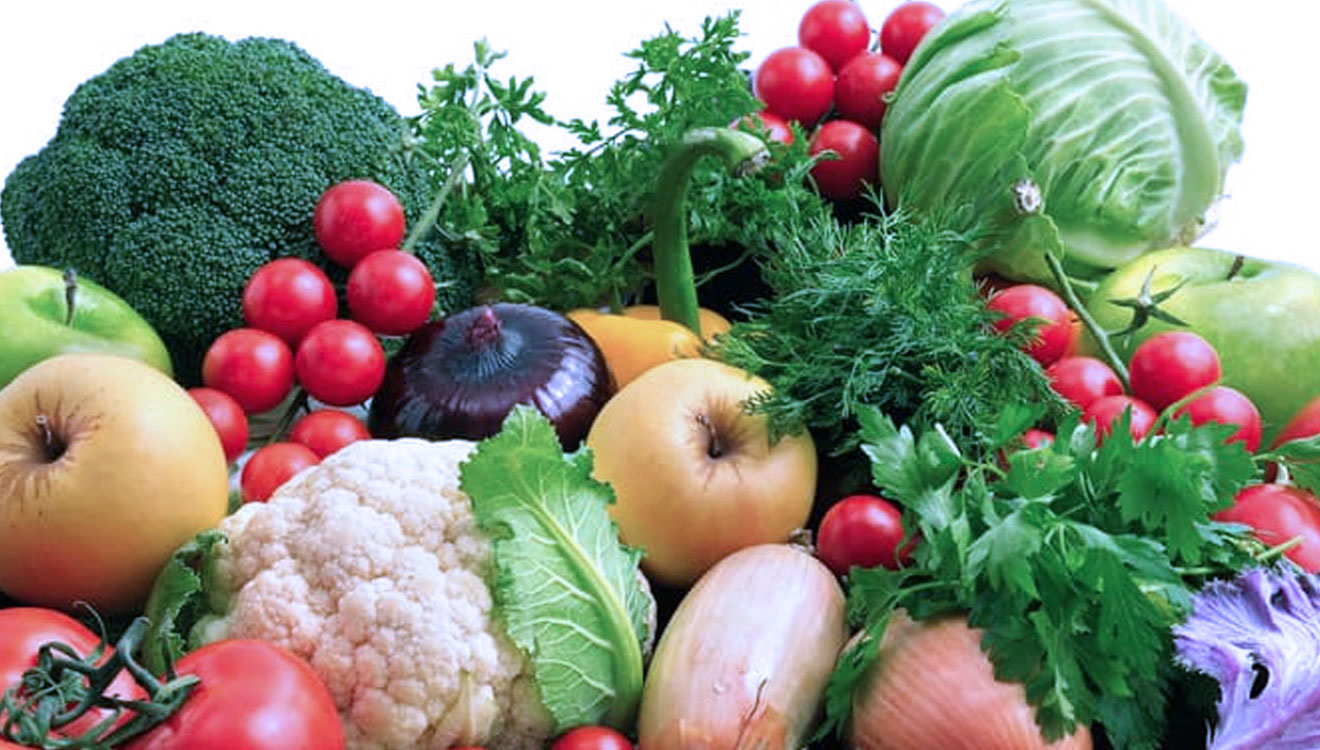 People who, due to their profession or other reasons, move little are more prone to hemorrhoids. Deterioration of pelvic blood flow is a consequence of prolonged sitting or standing, which provokes the formation of hemorrhoids;
People who, due to their profession or other reasons, move little are more prone to hemorrhoids. Deterioration of pelvic blood flow is a consequence of prolonged sitting or standing, which provokes the formation of hemorrhoids;
 With the help of anoscopy, the proctologist can assess the state of internal hemorrhoids, the presence of inflammatory changes in the mucous membrane, detect polyps of the anal canal, mucosal defects, blood clots and possible sources of bleeding.
With the help of anoscopy, the proctologist can assess the state of internal hemorrhoids, the presence of inflammatory changes in the mucous membrane, detect polyps of the anal canal, mucosal defects, blood clots and possible sources of bleeding.